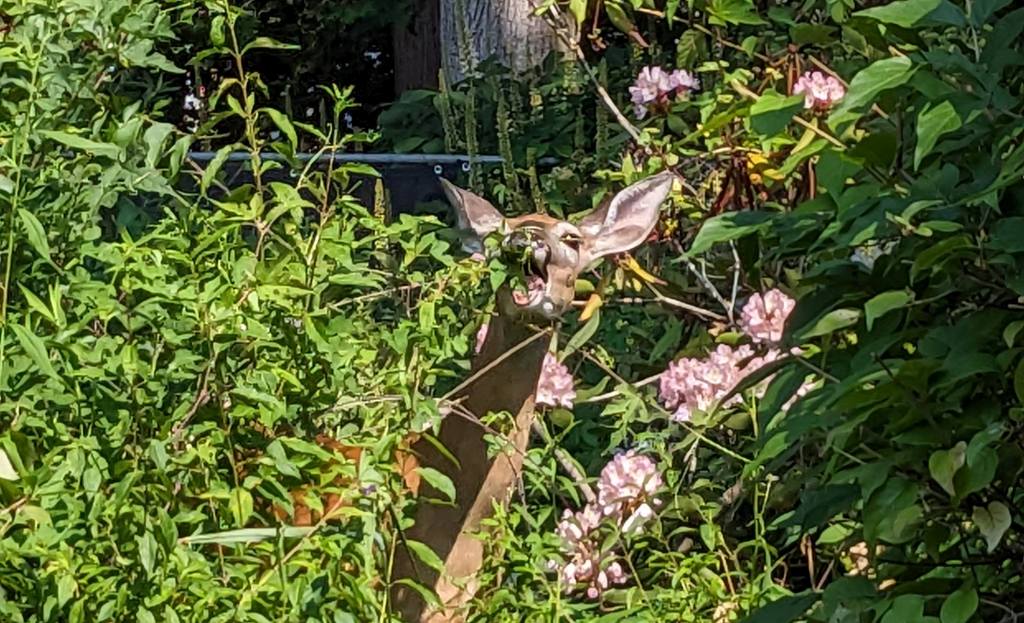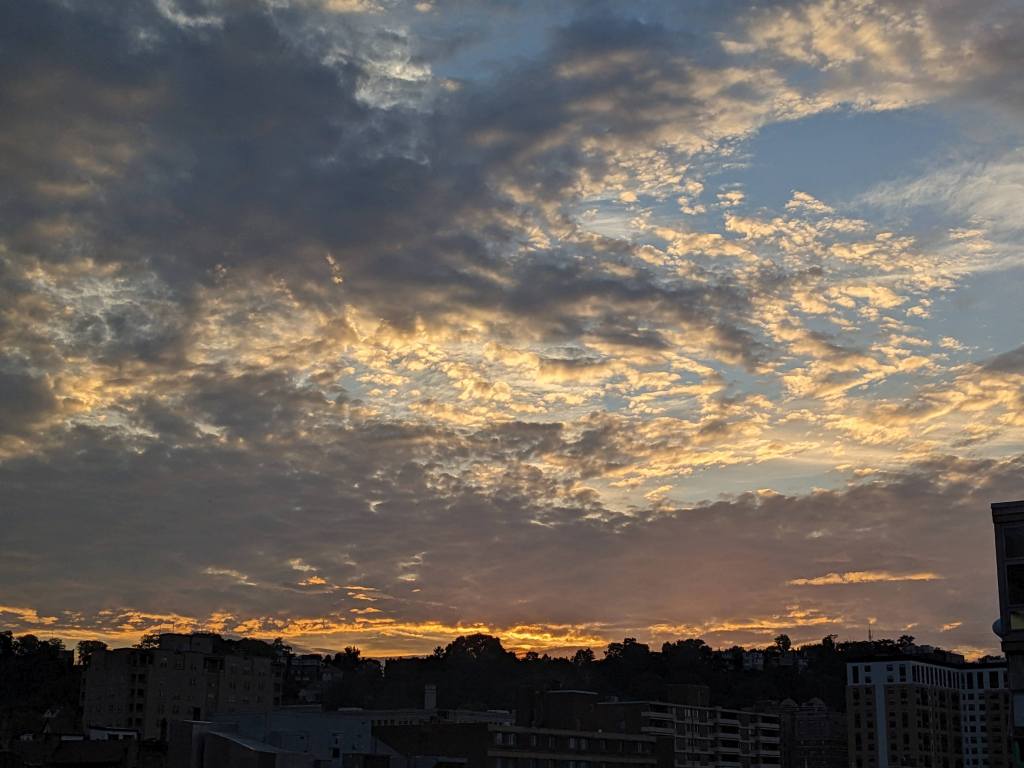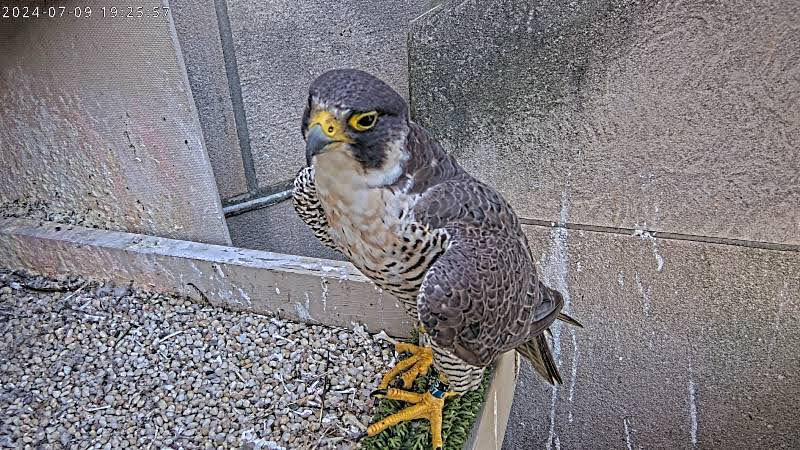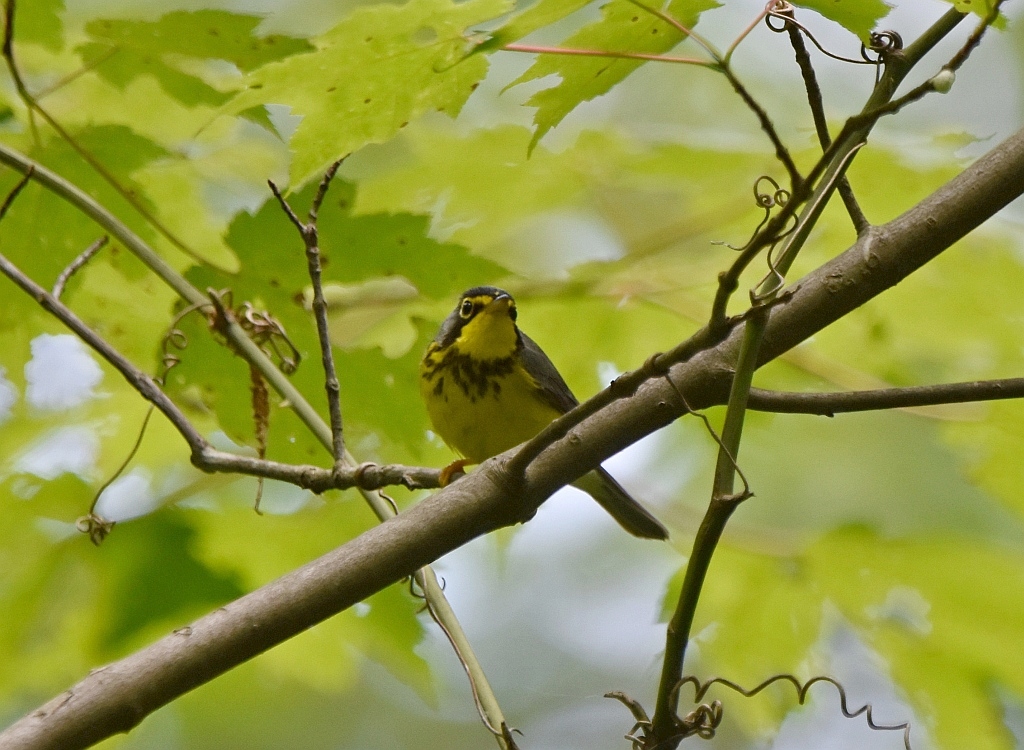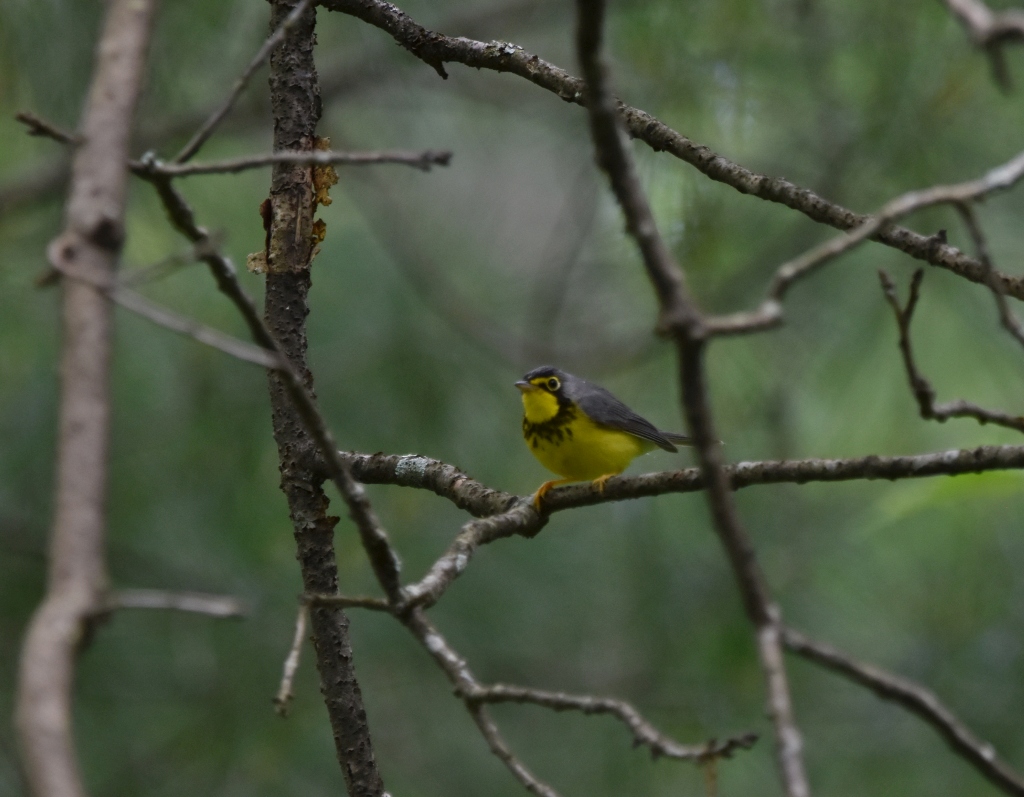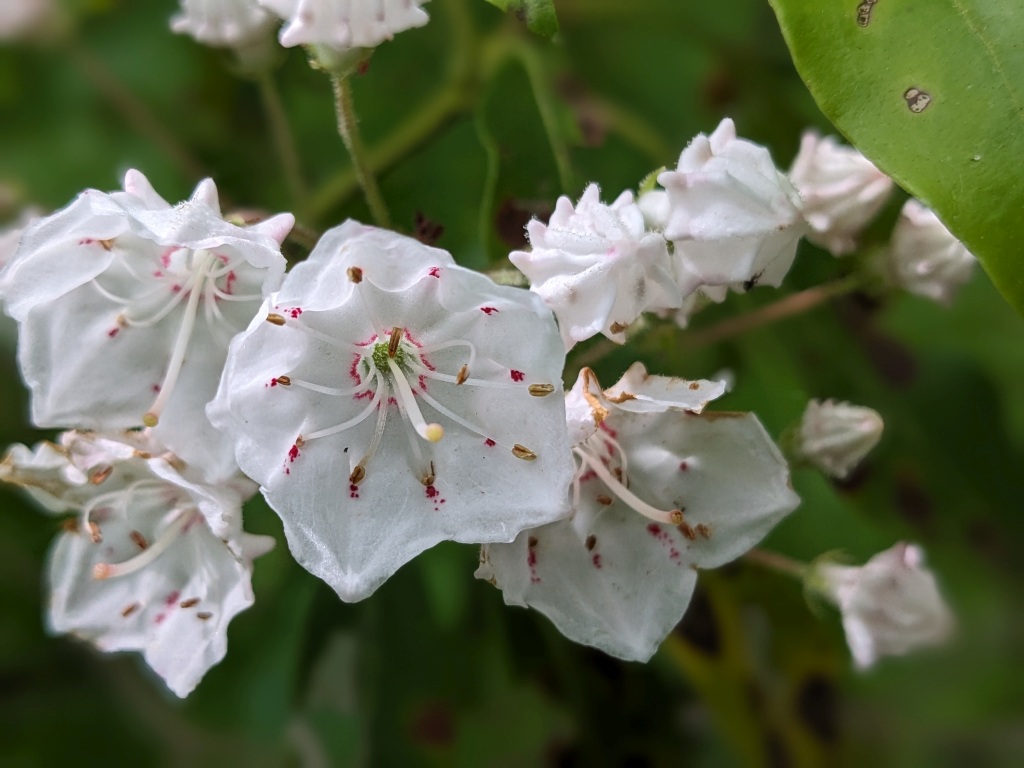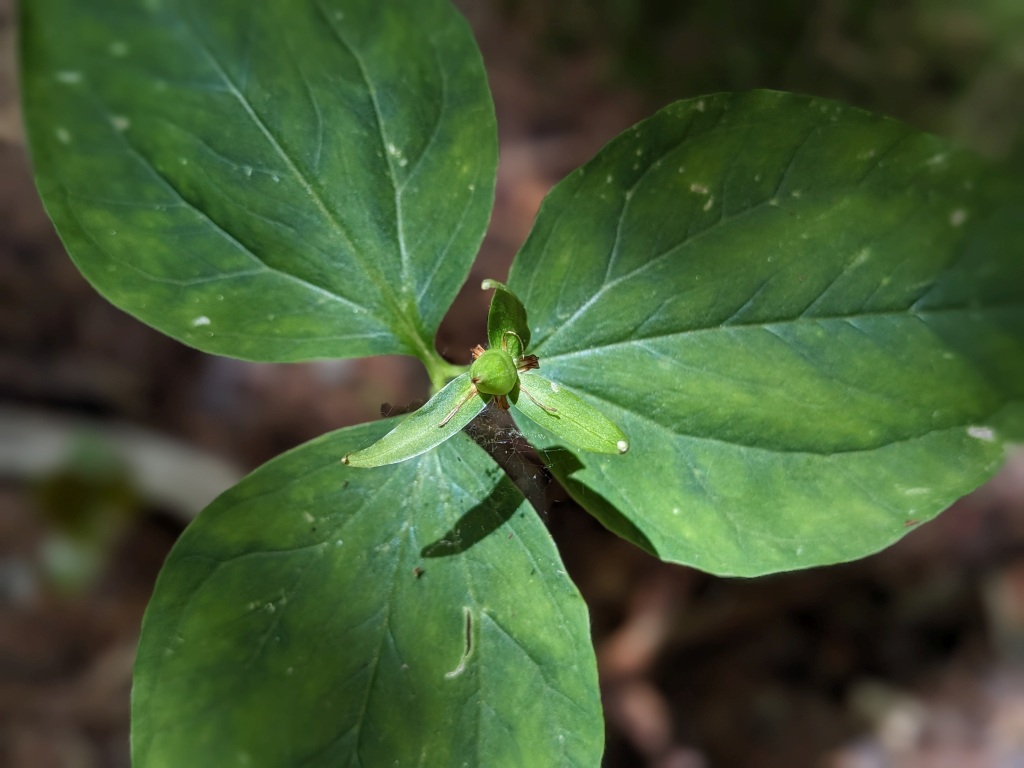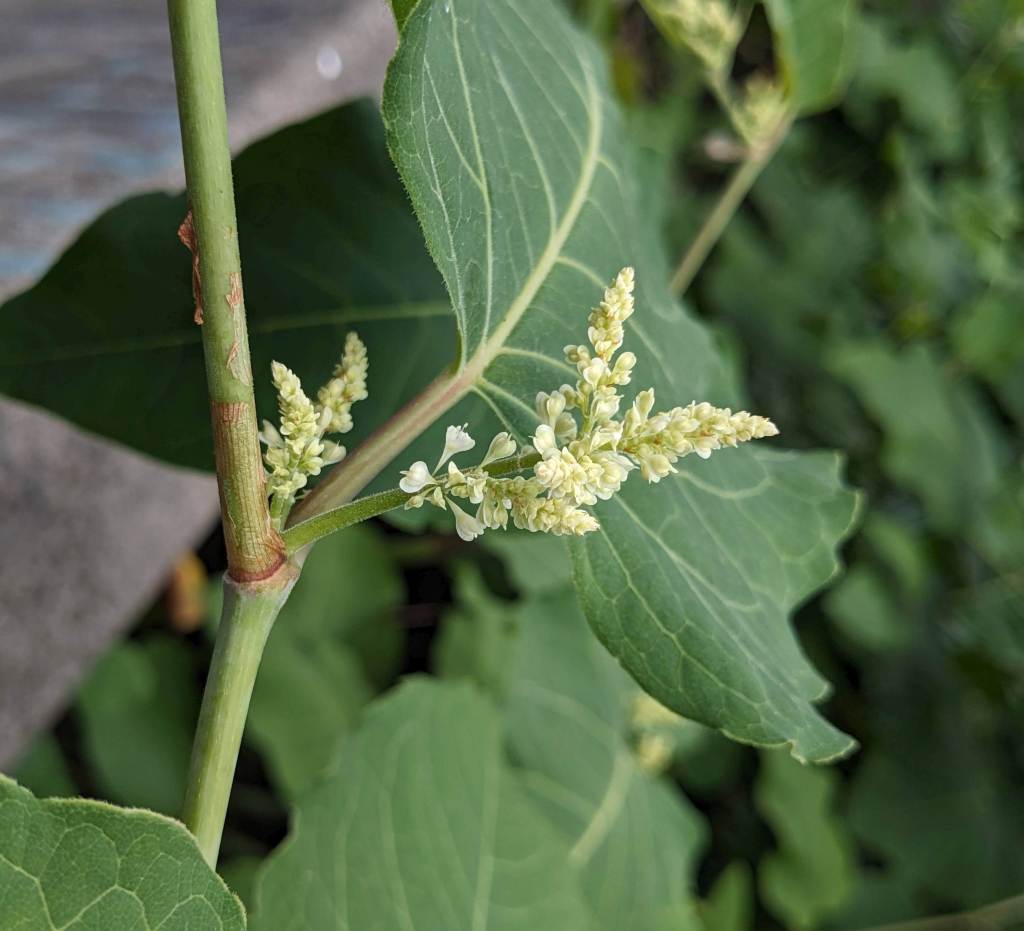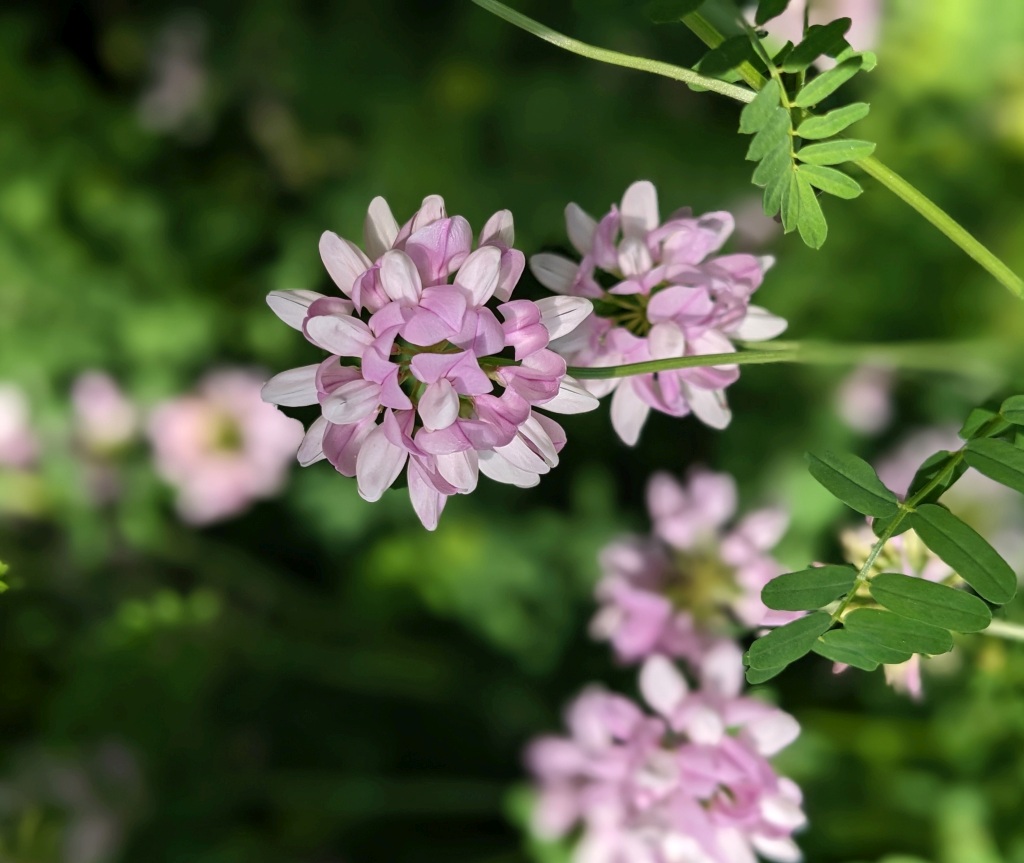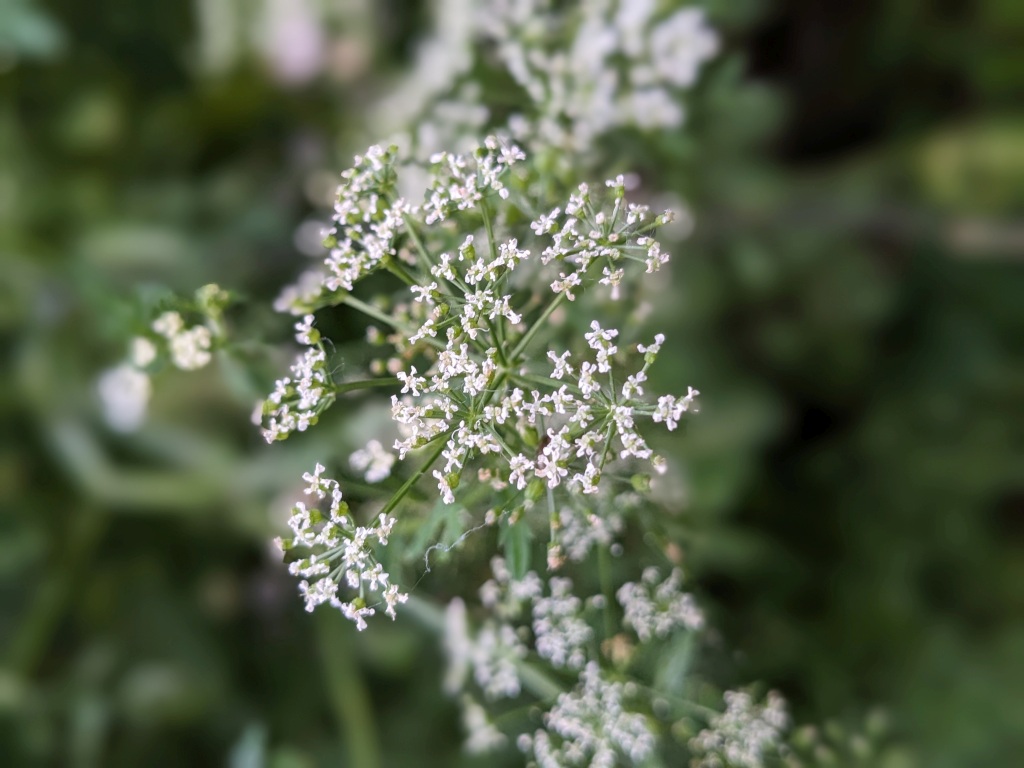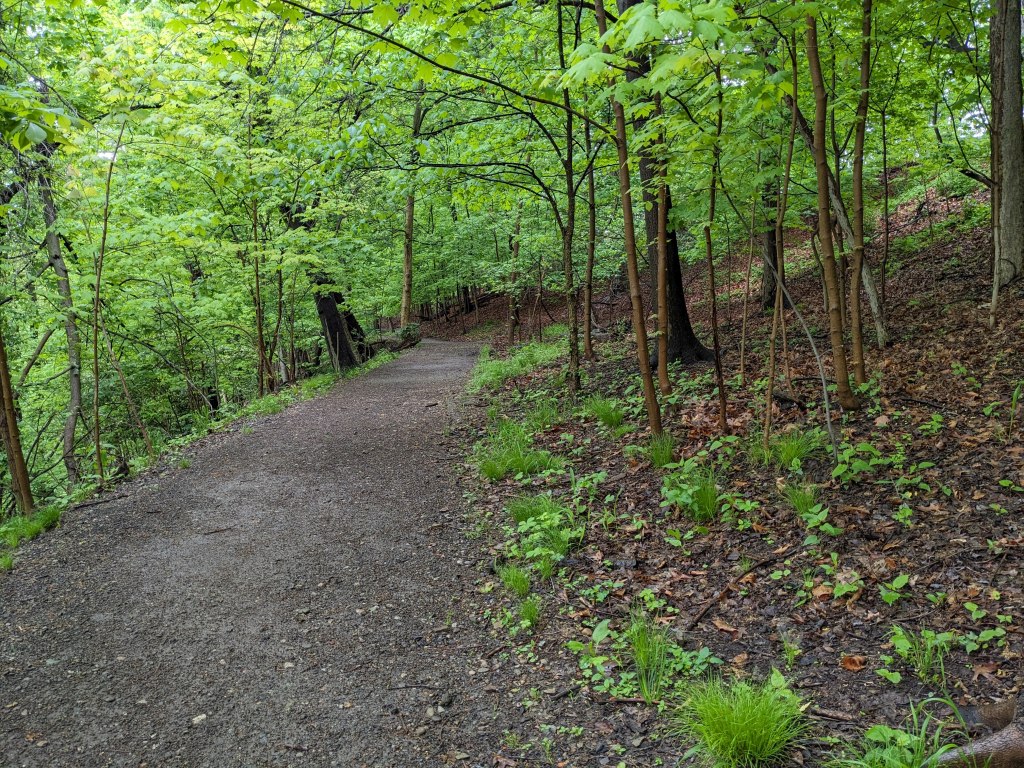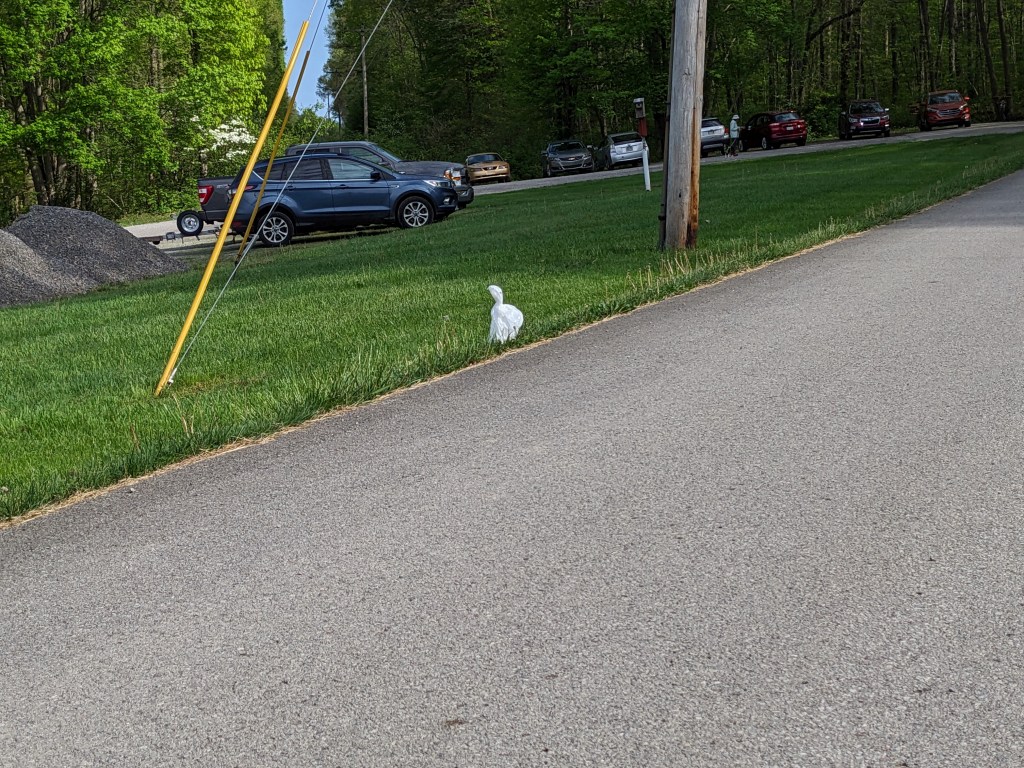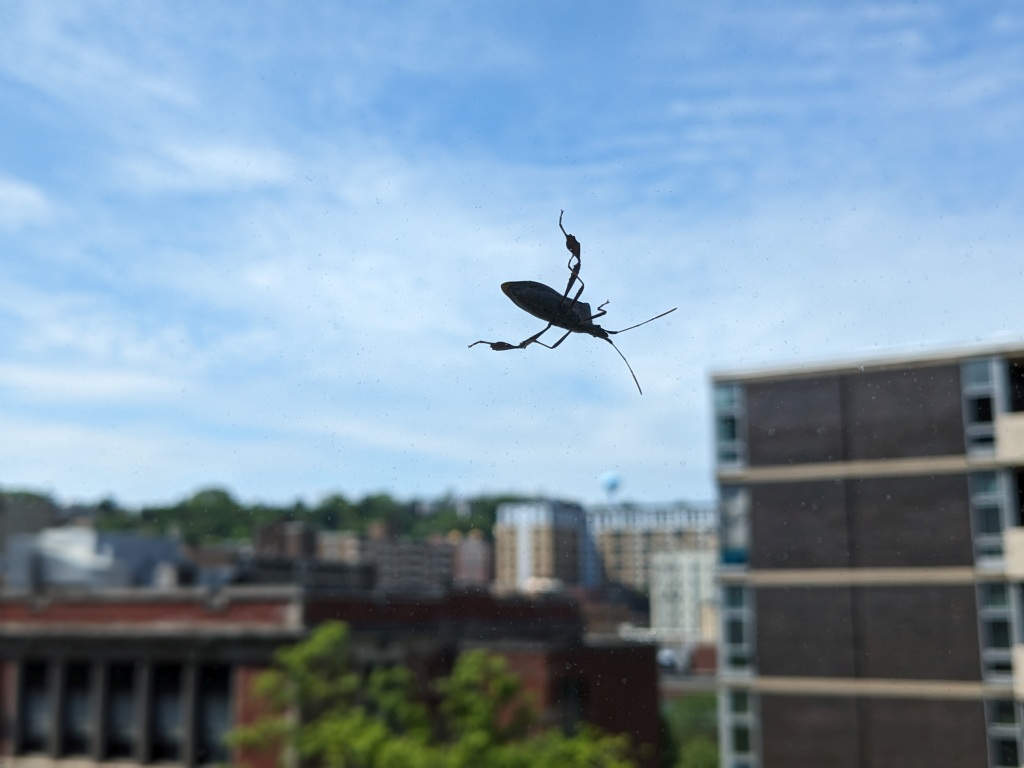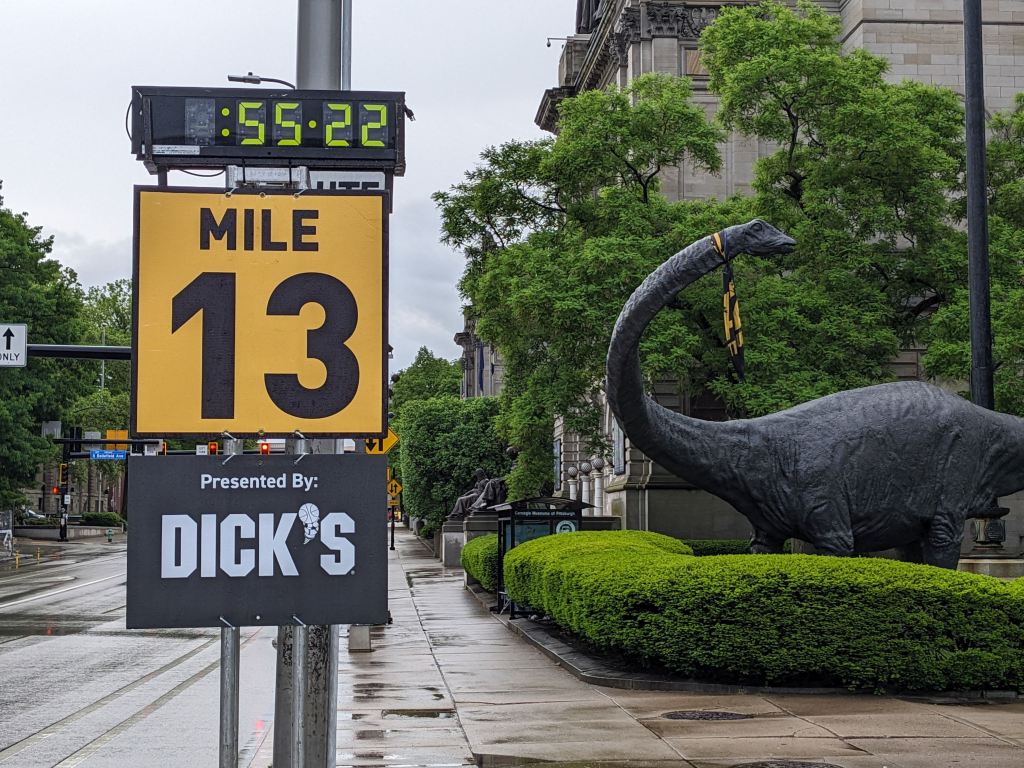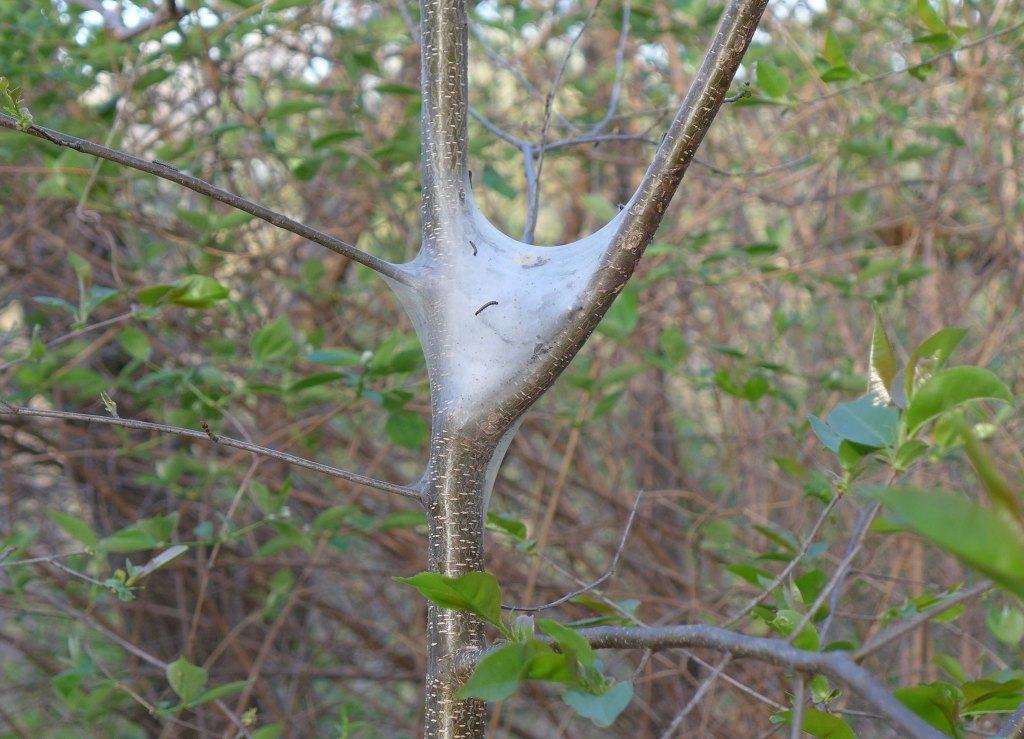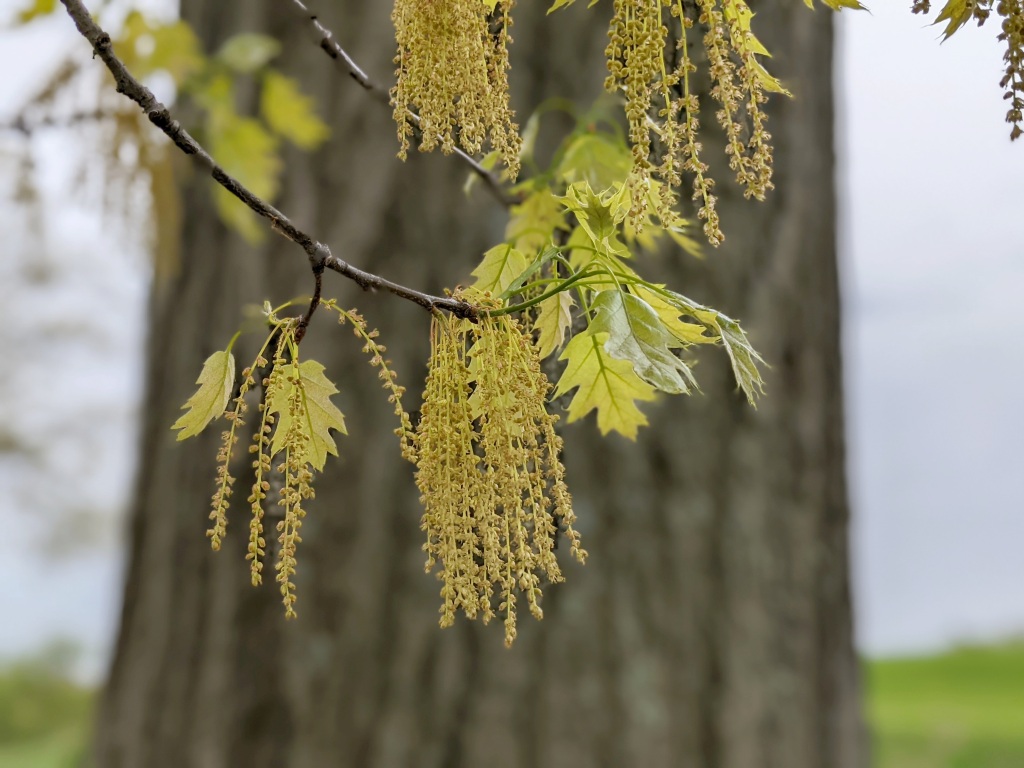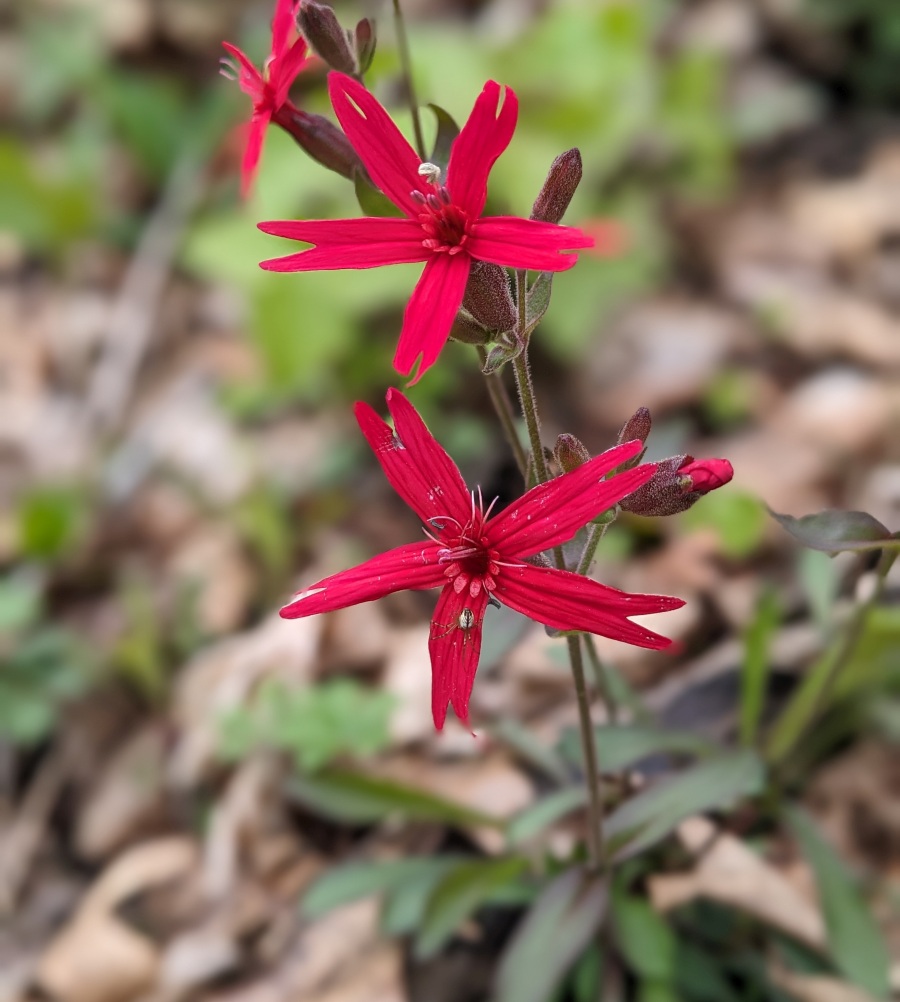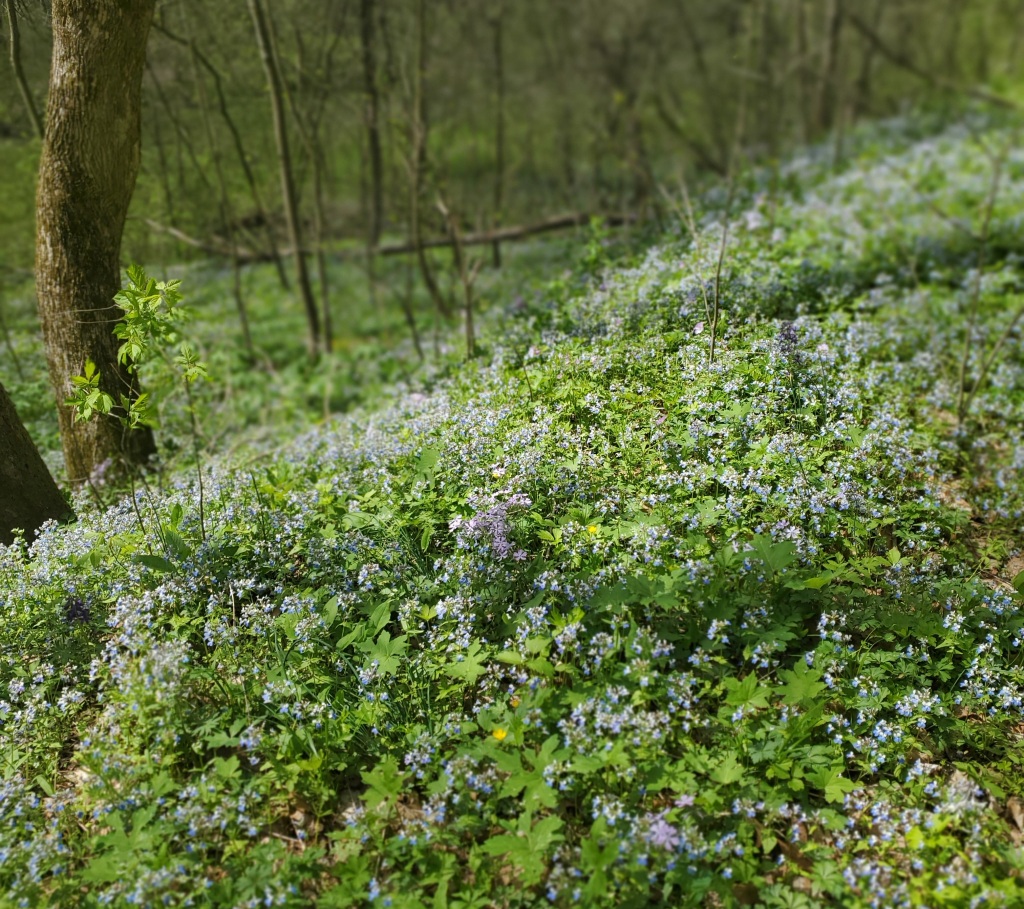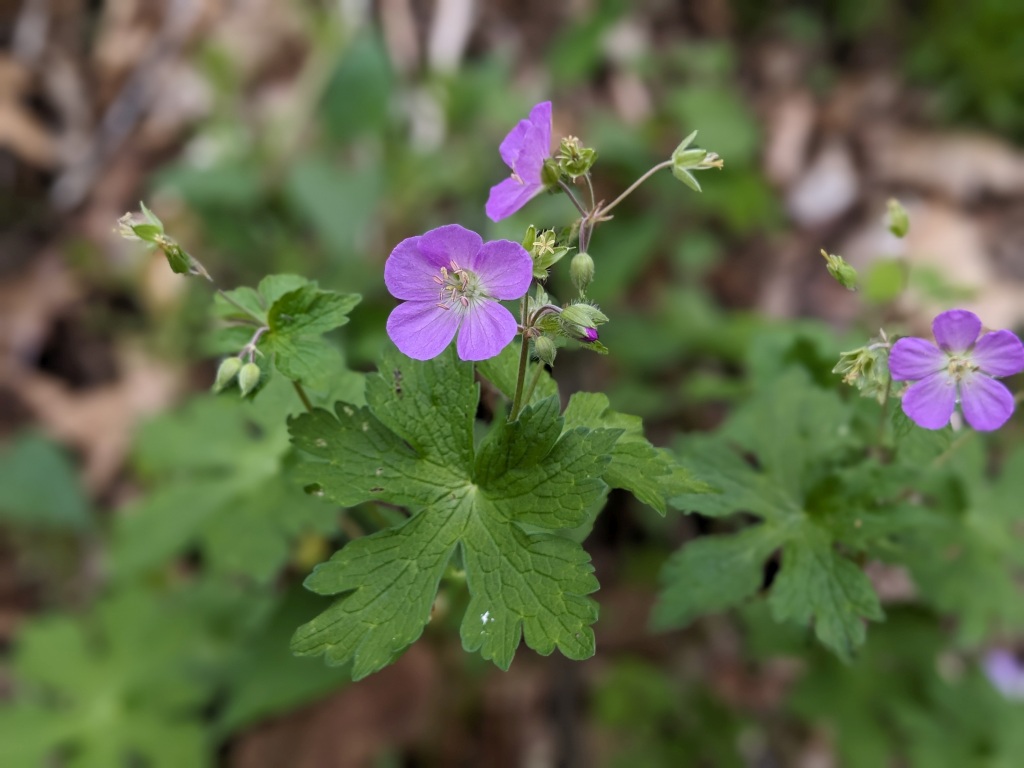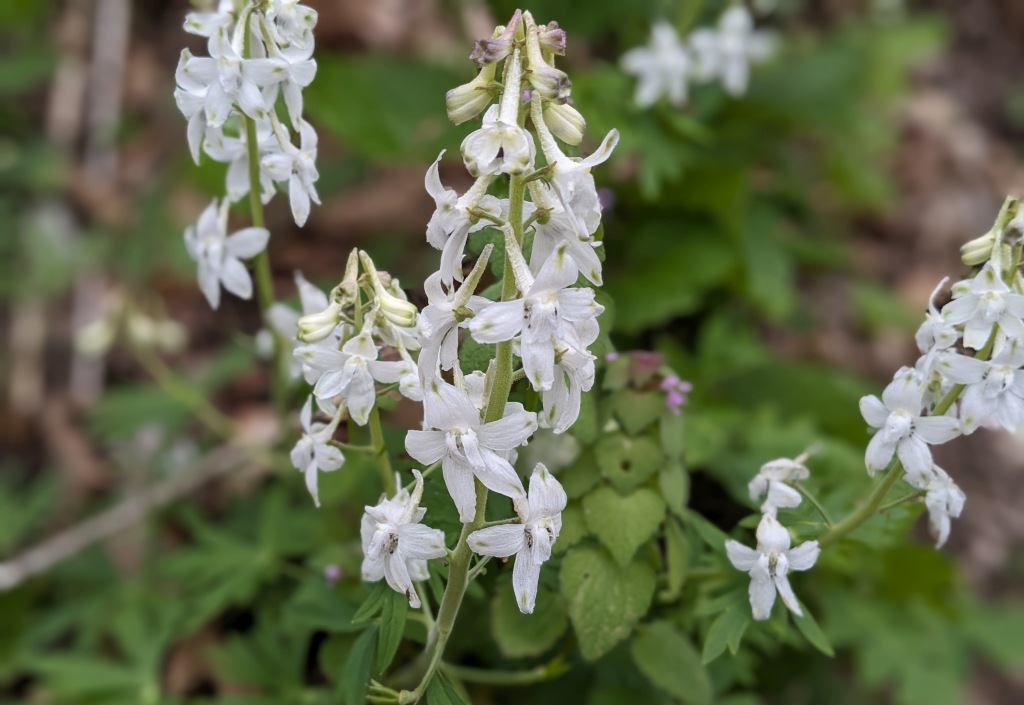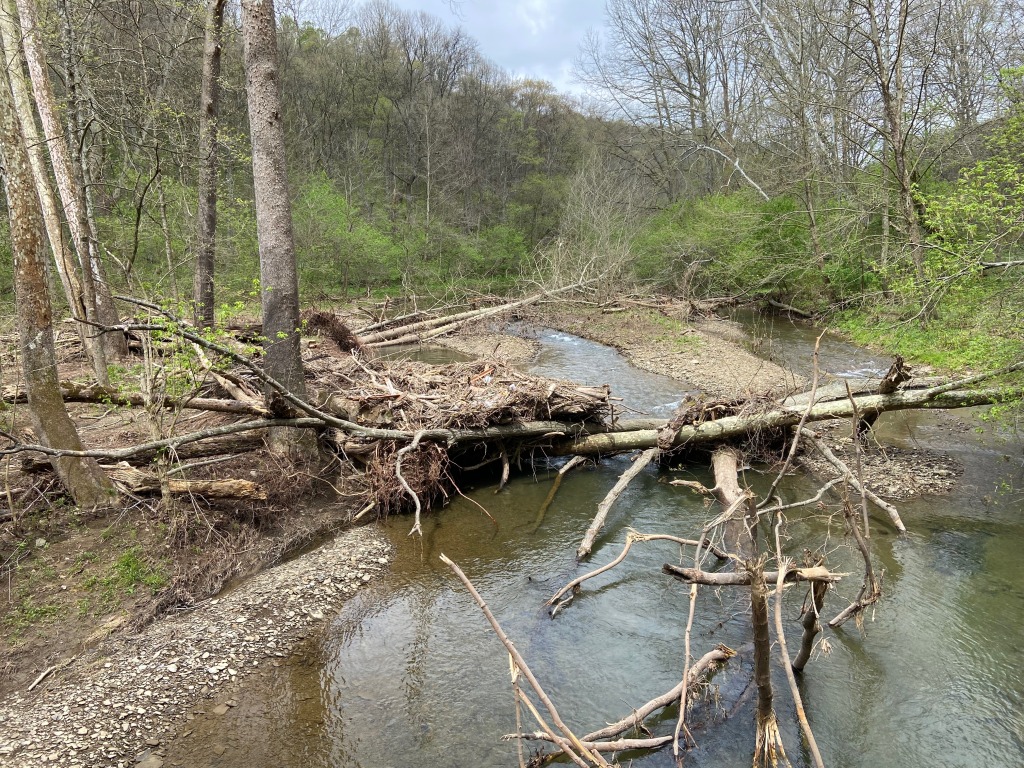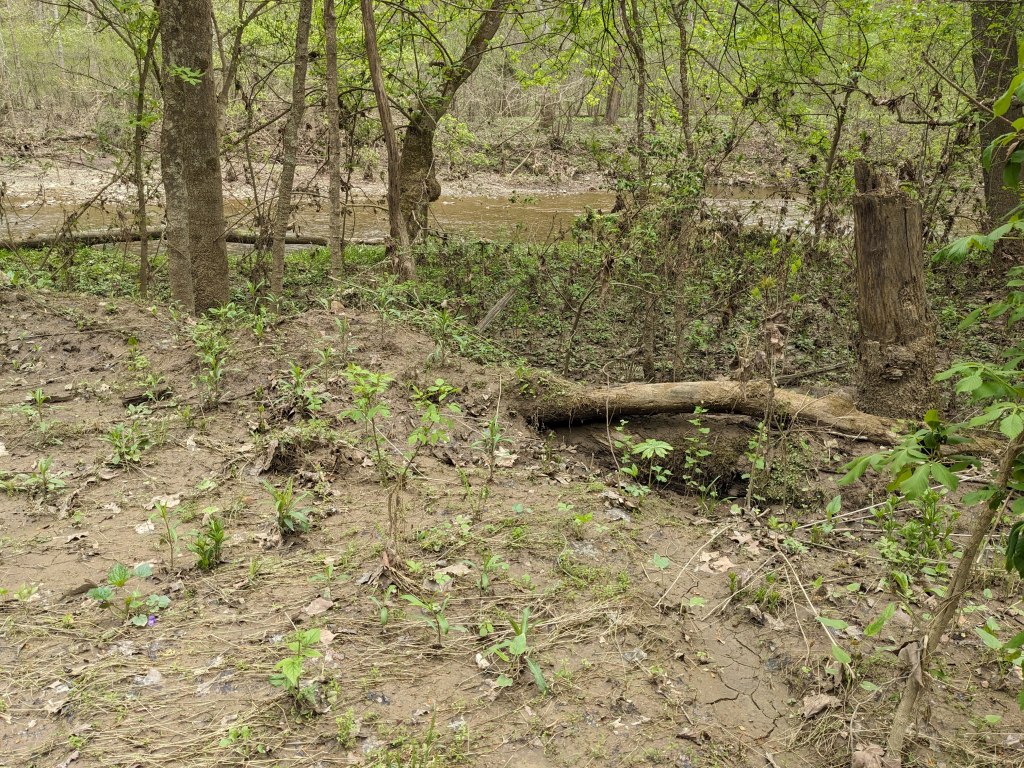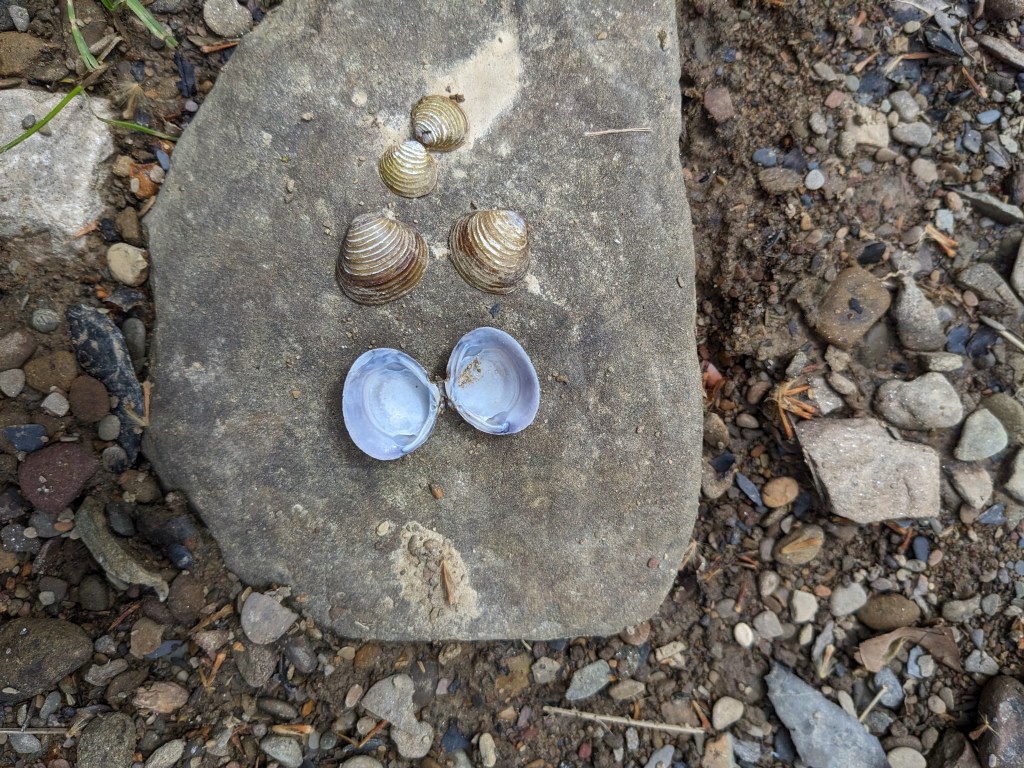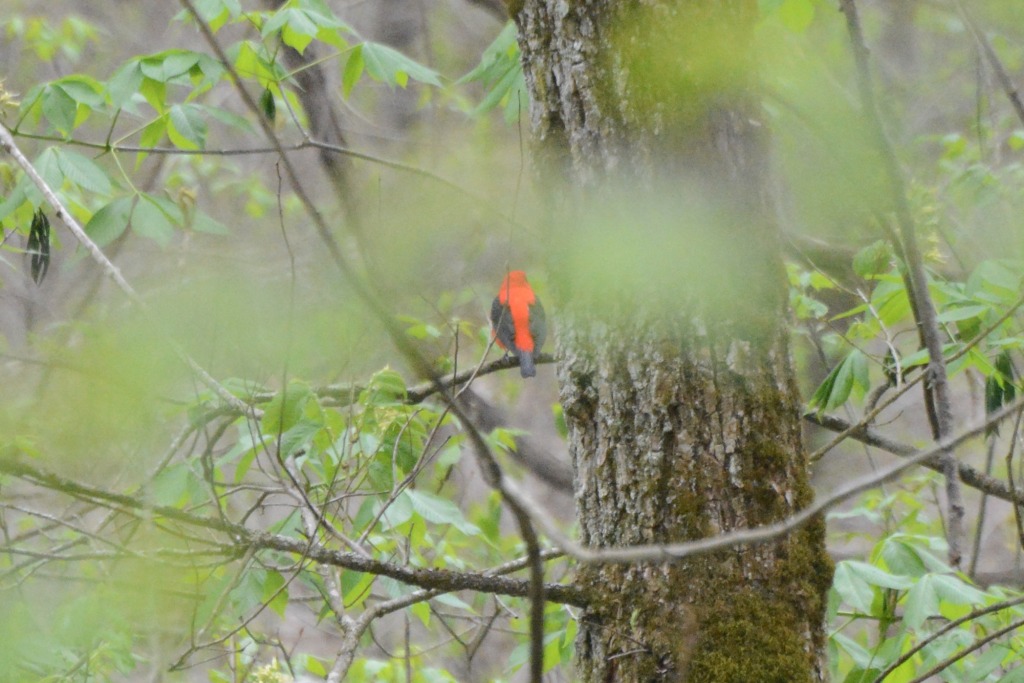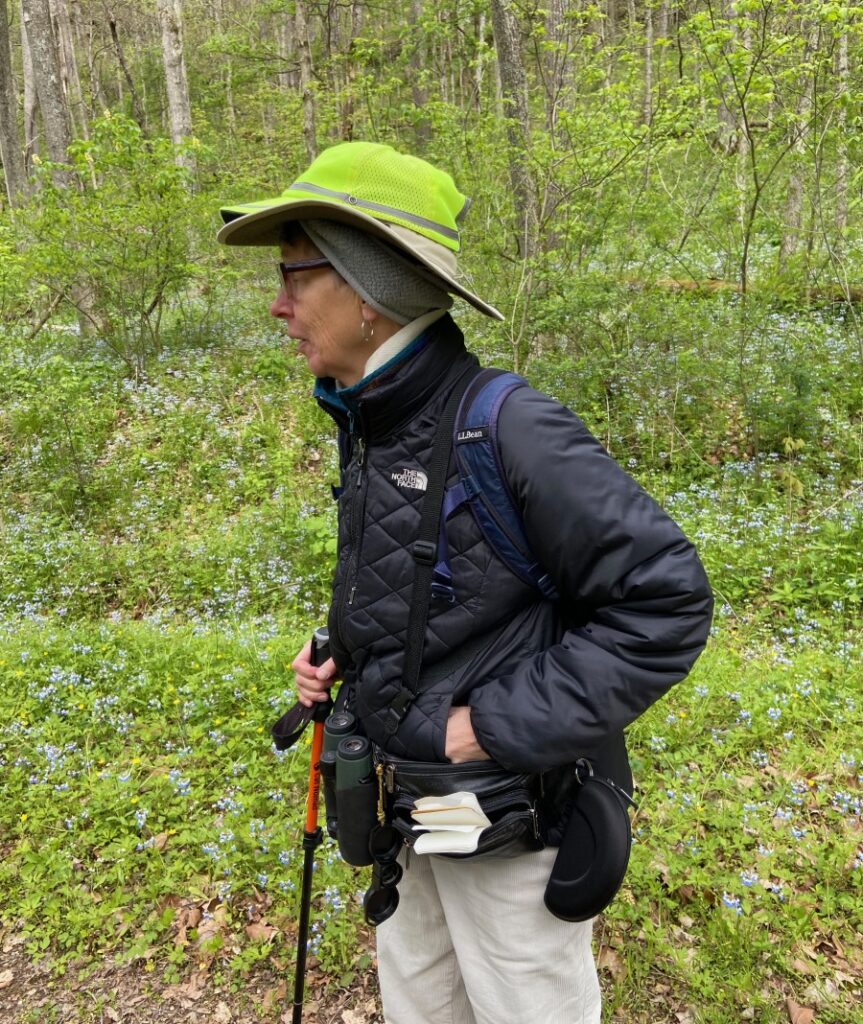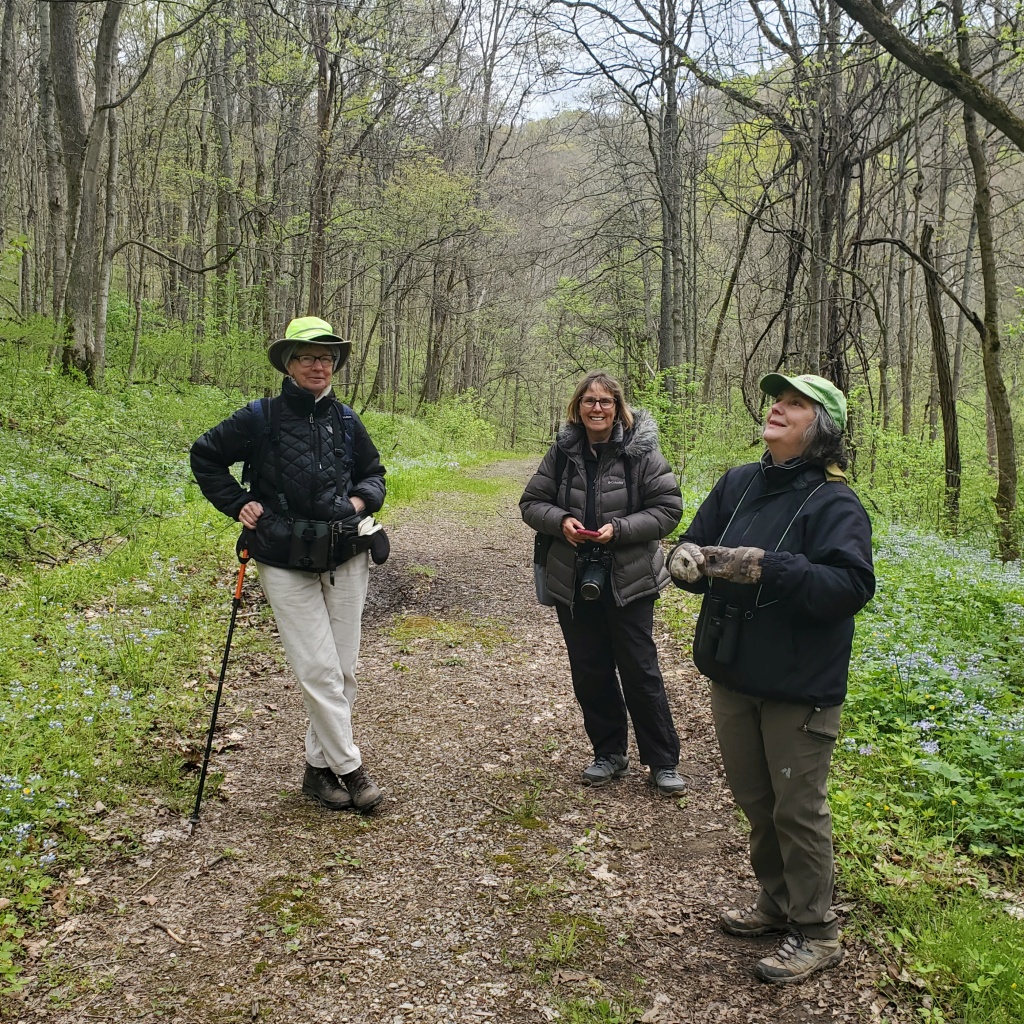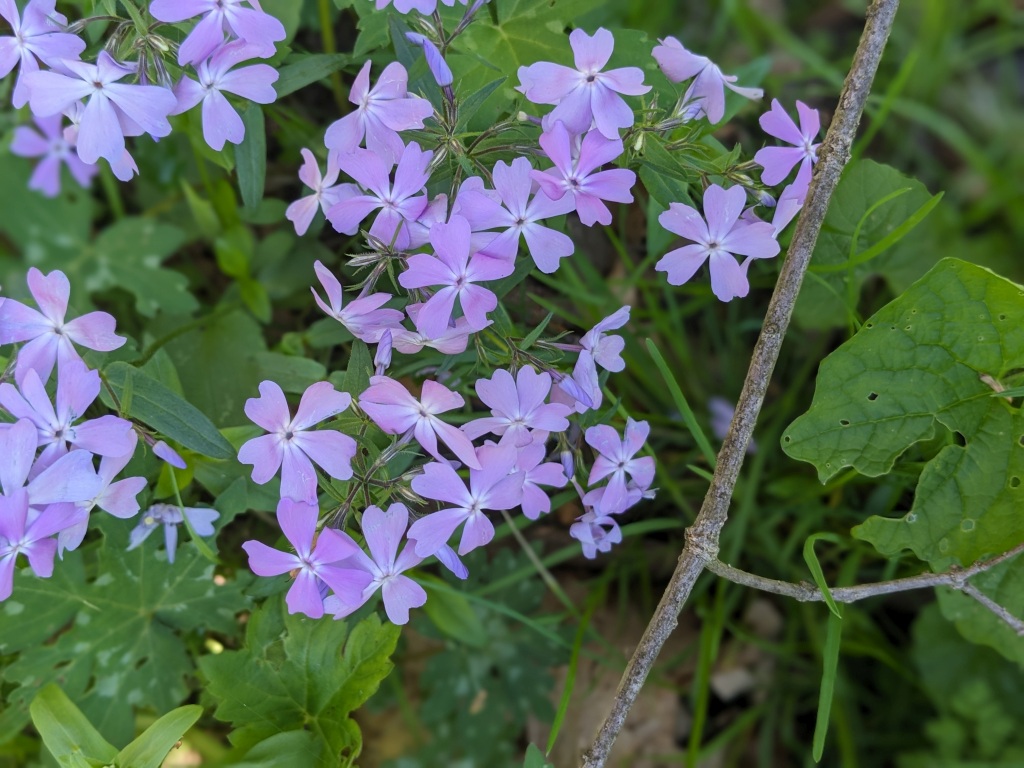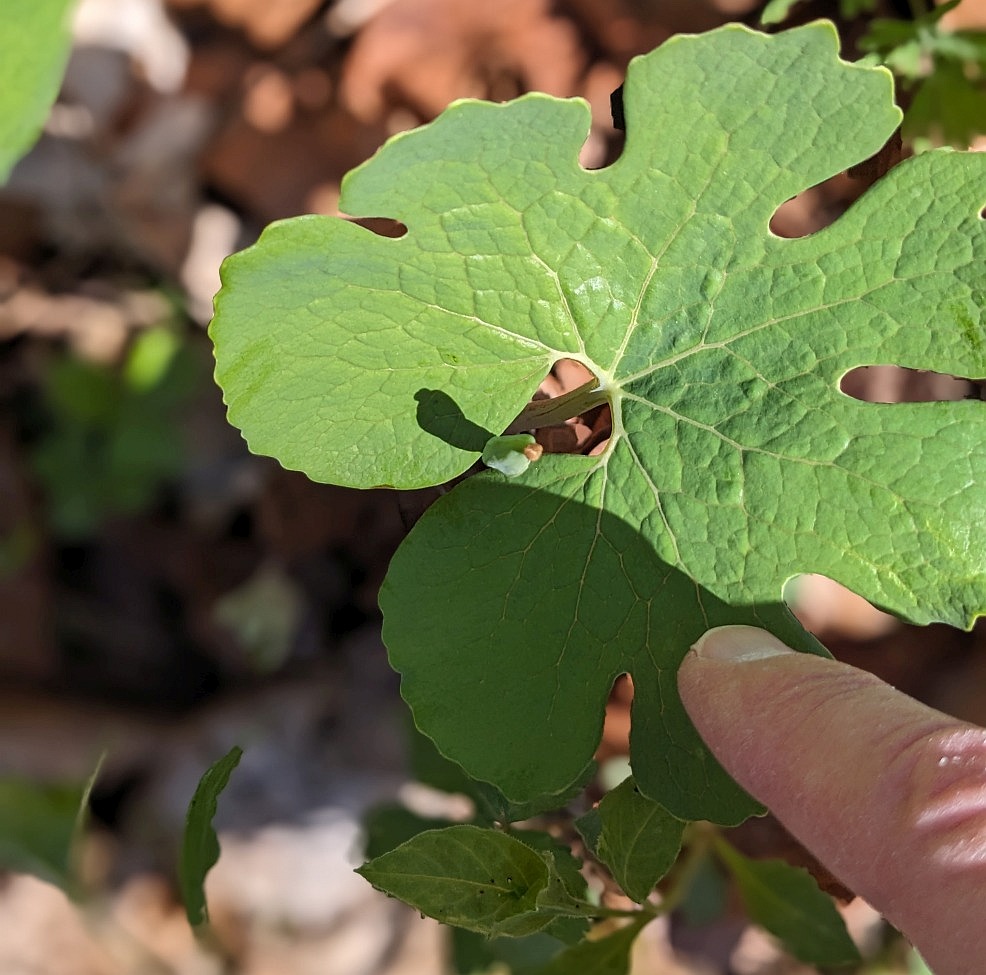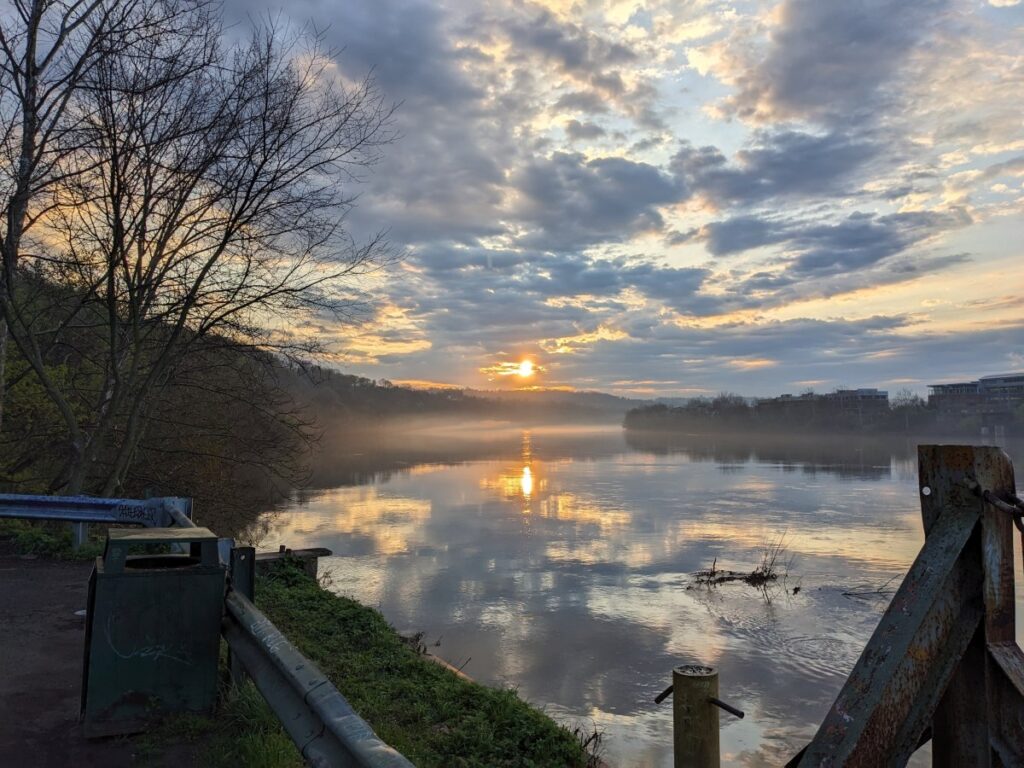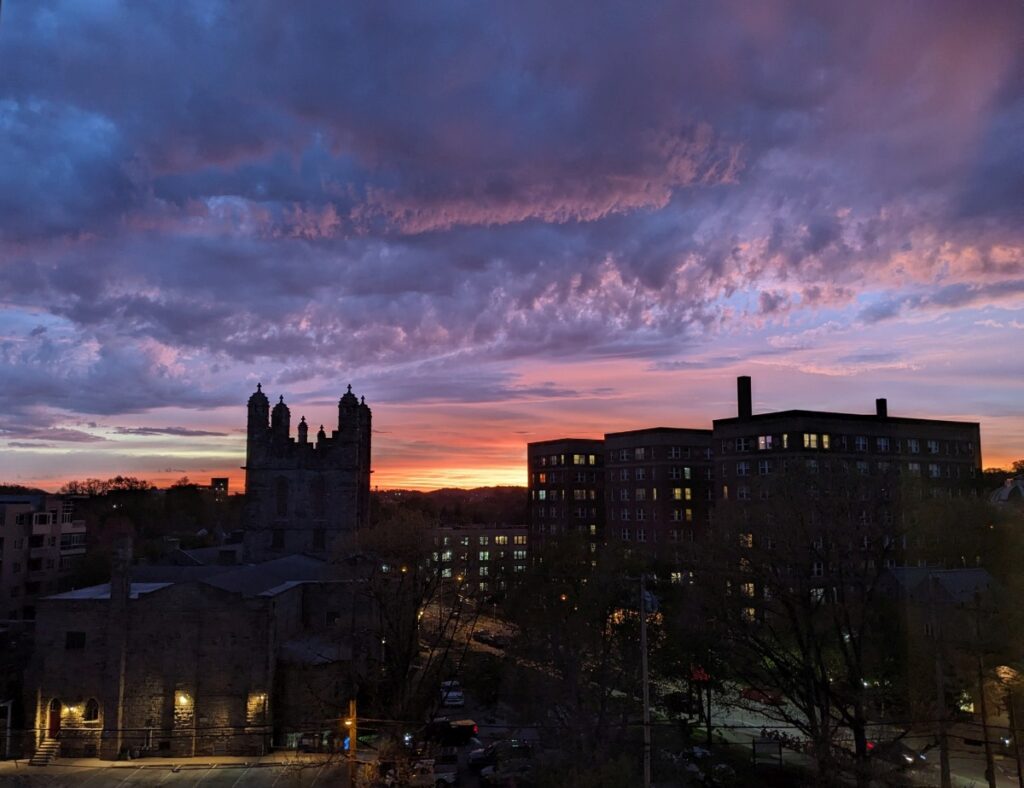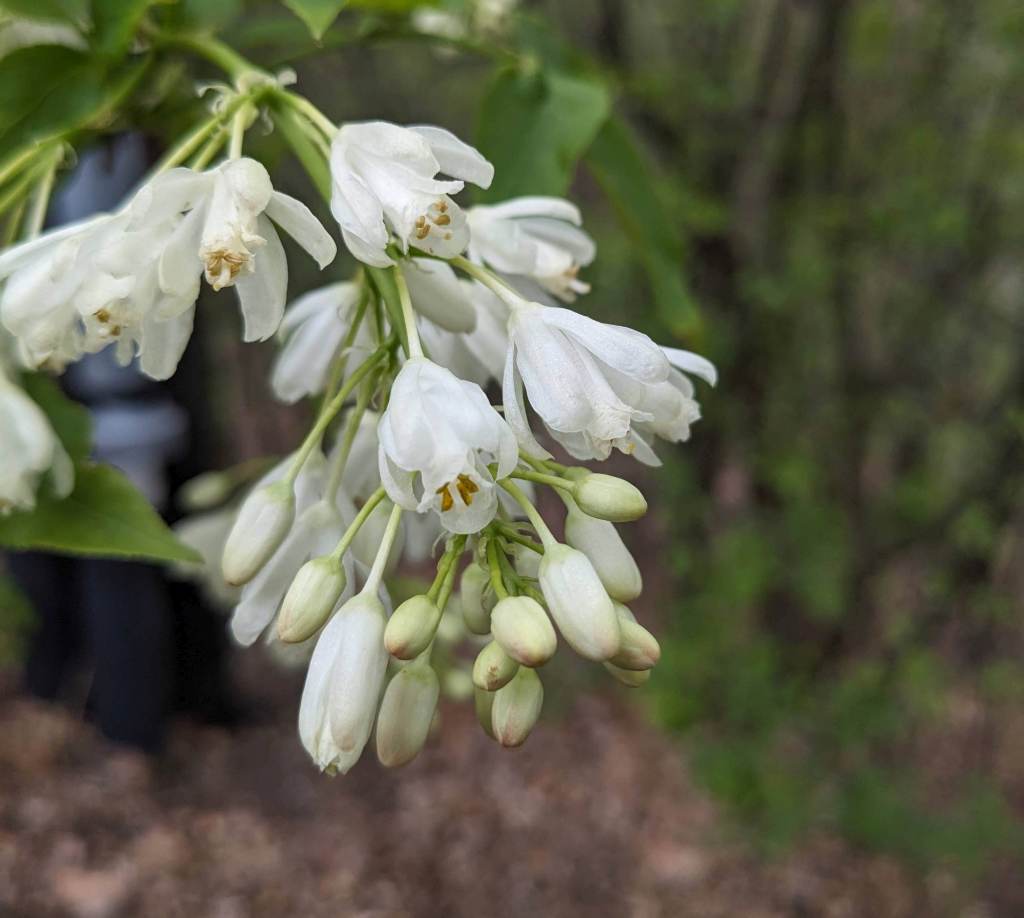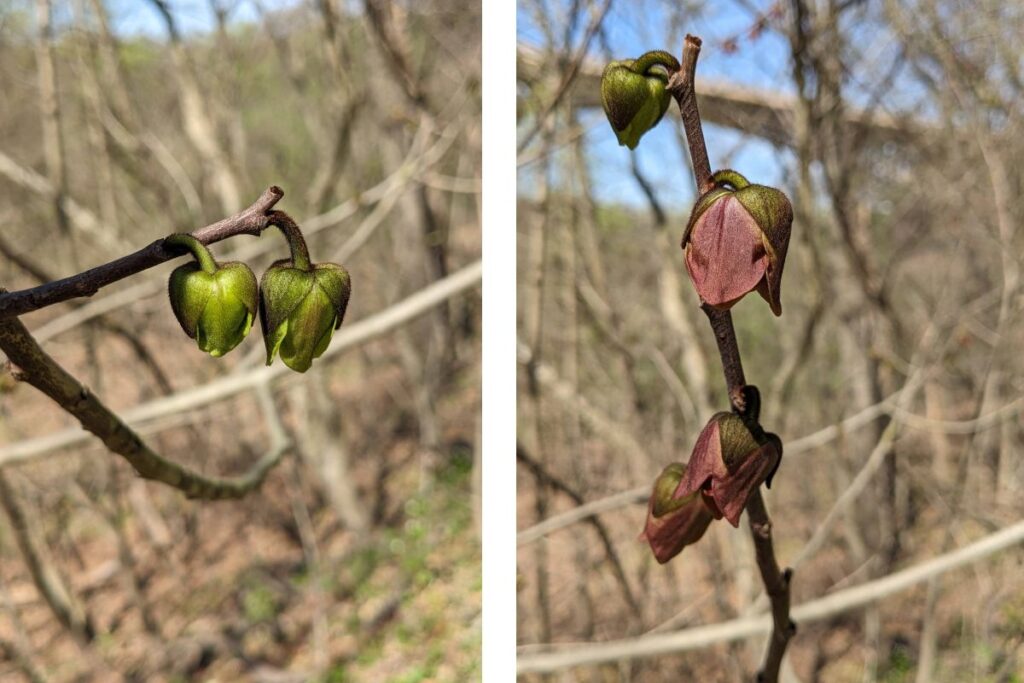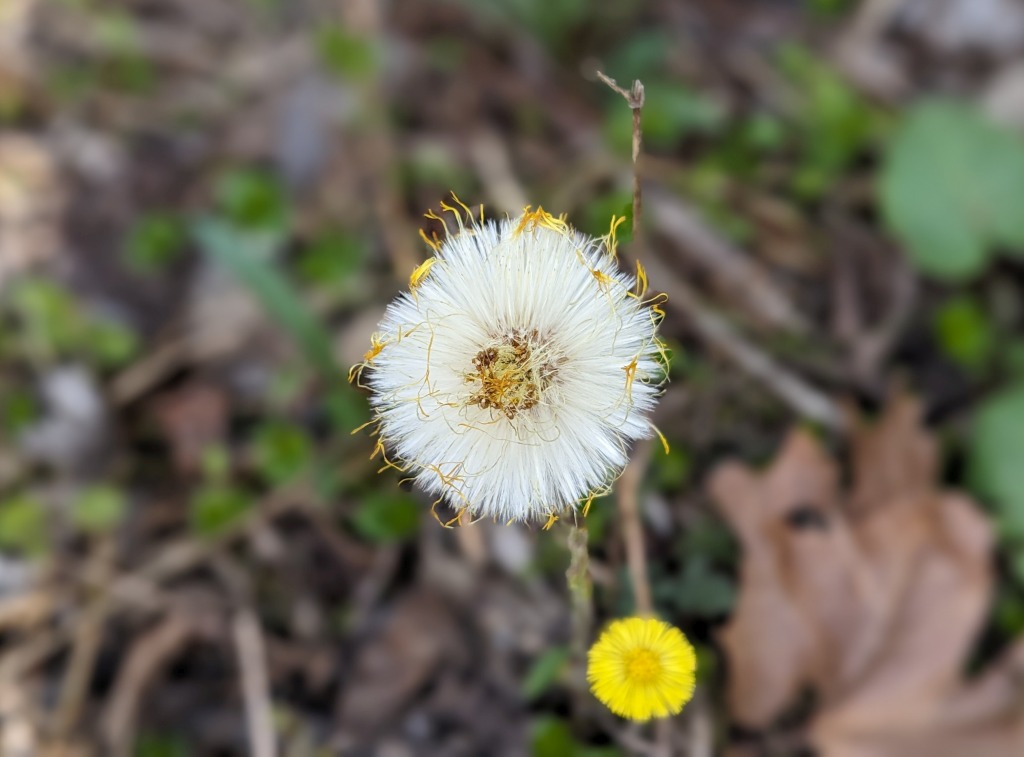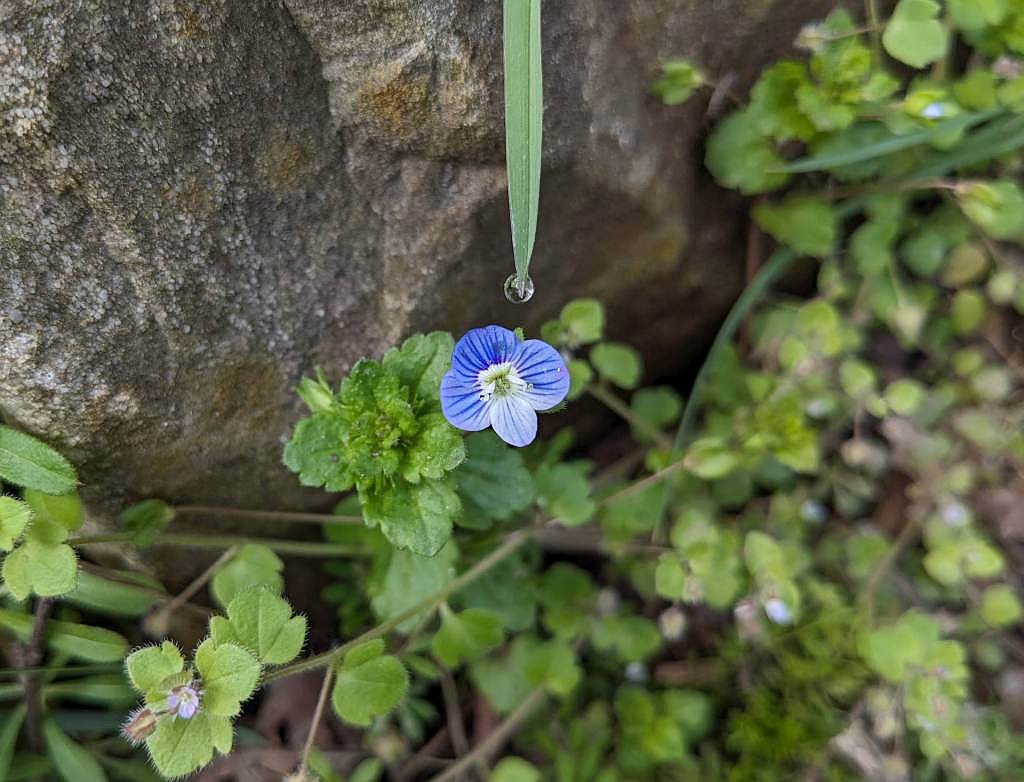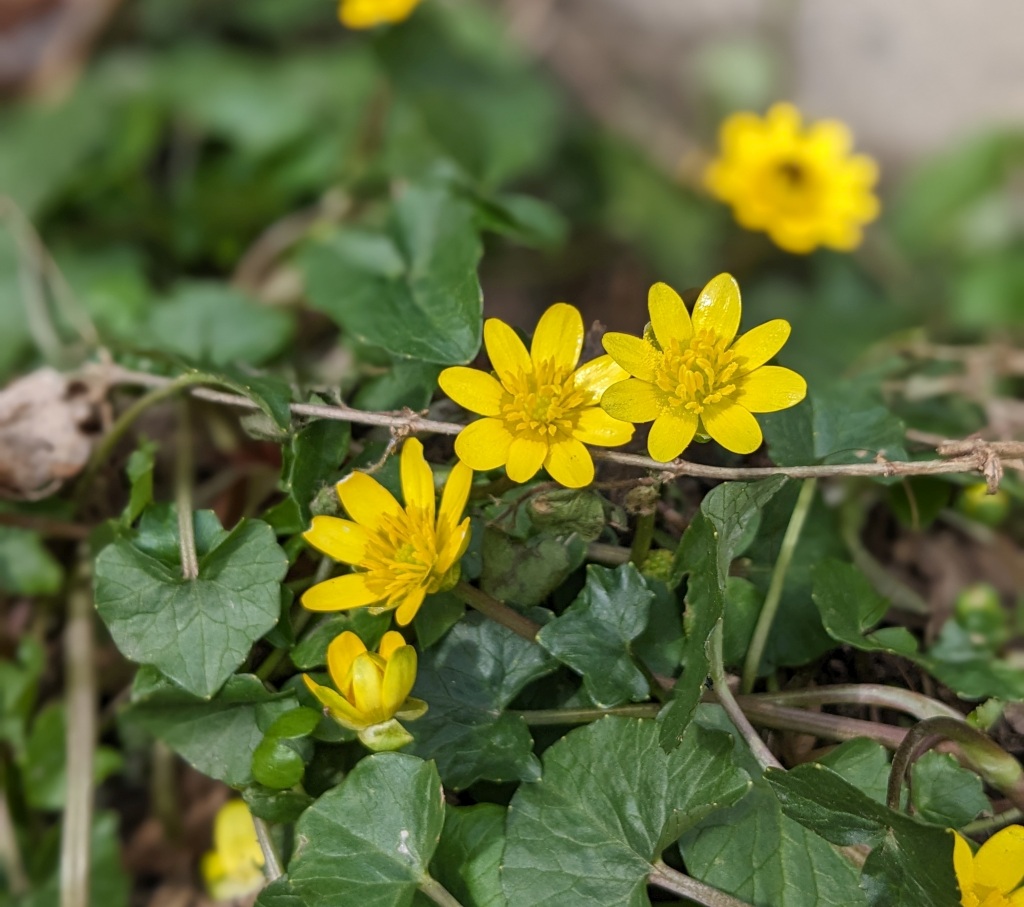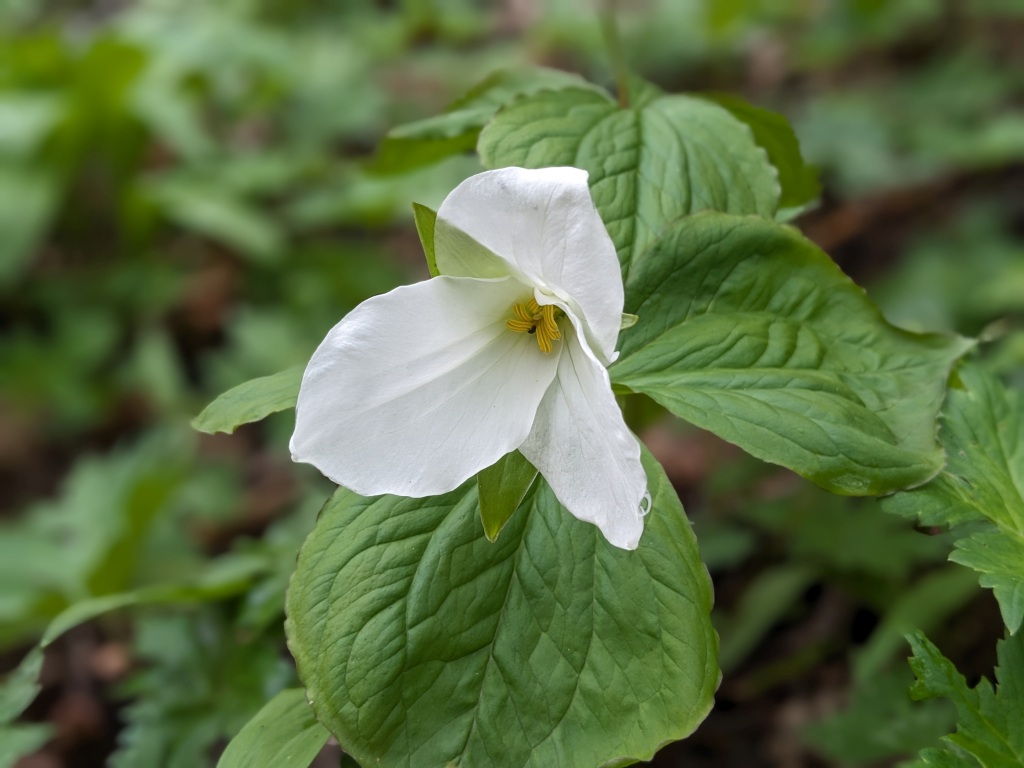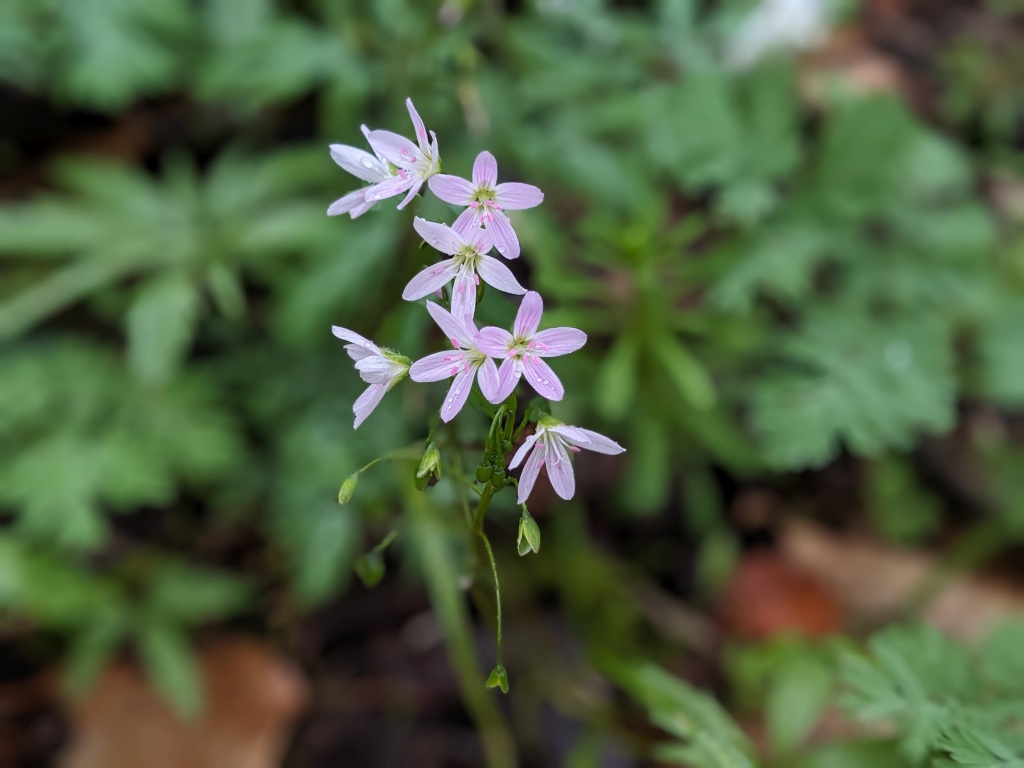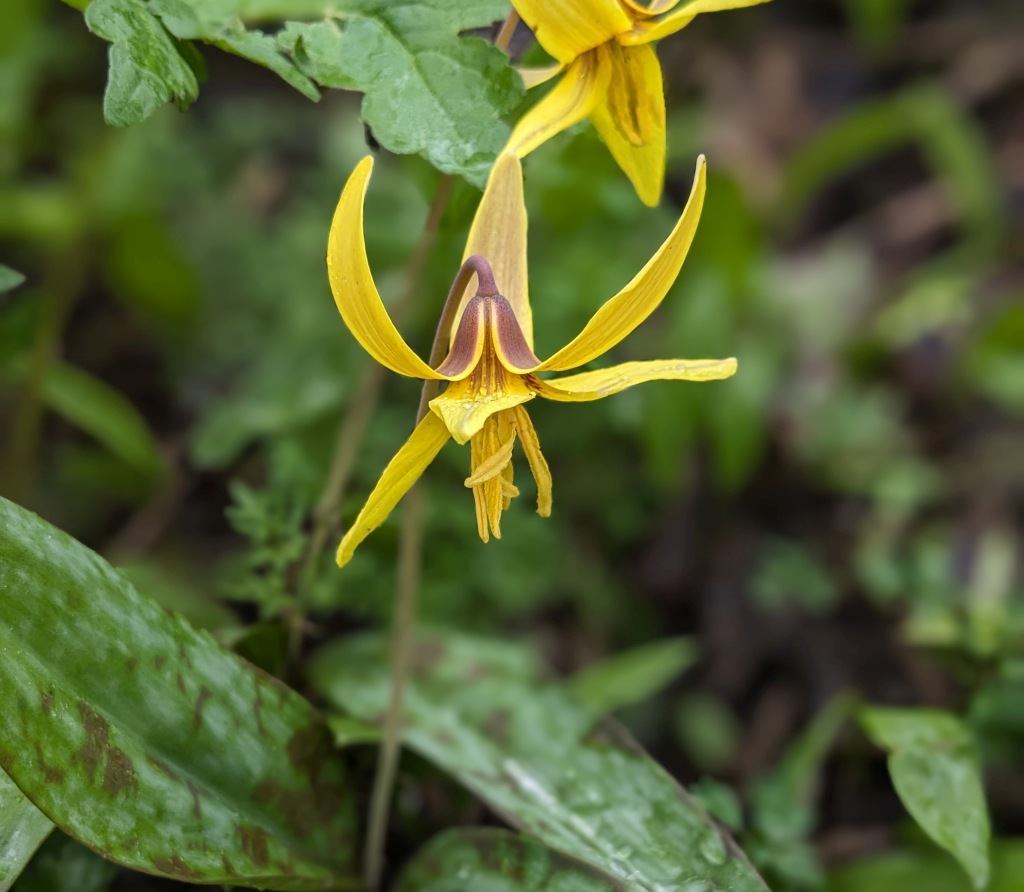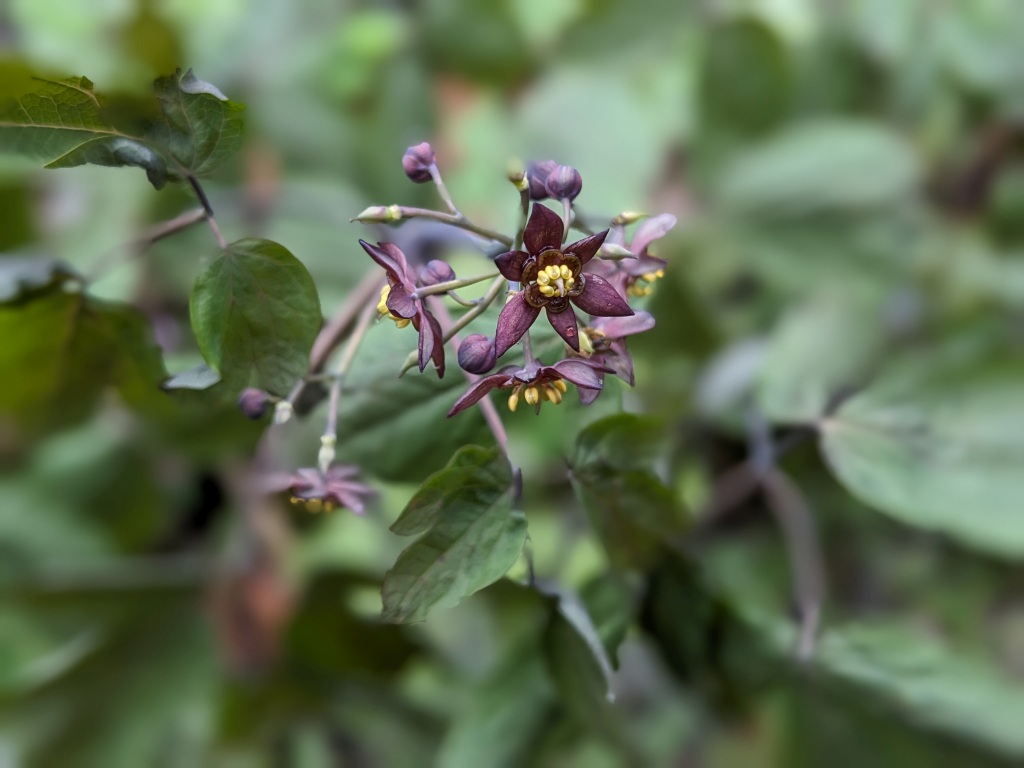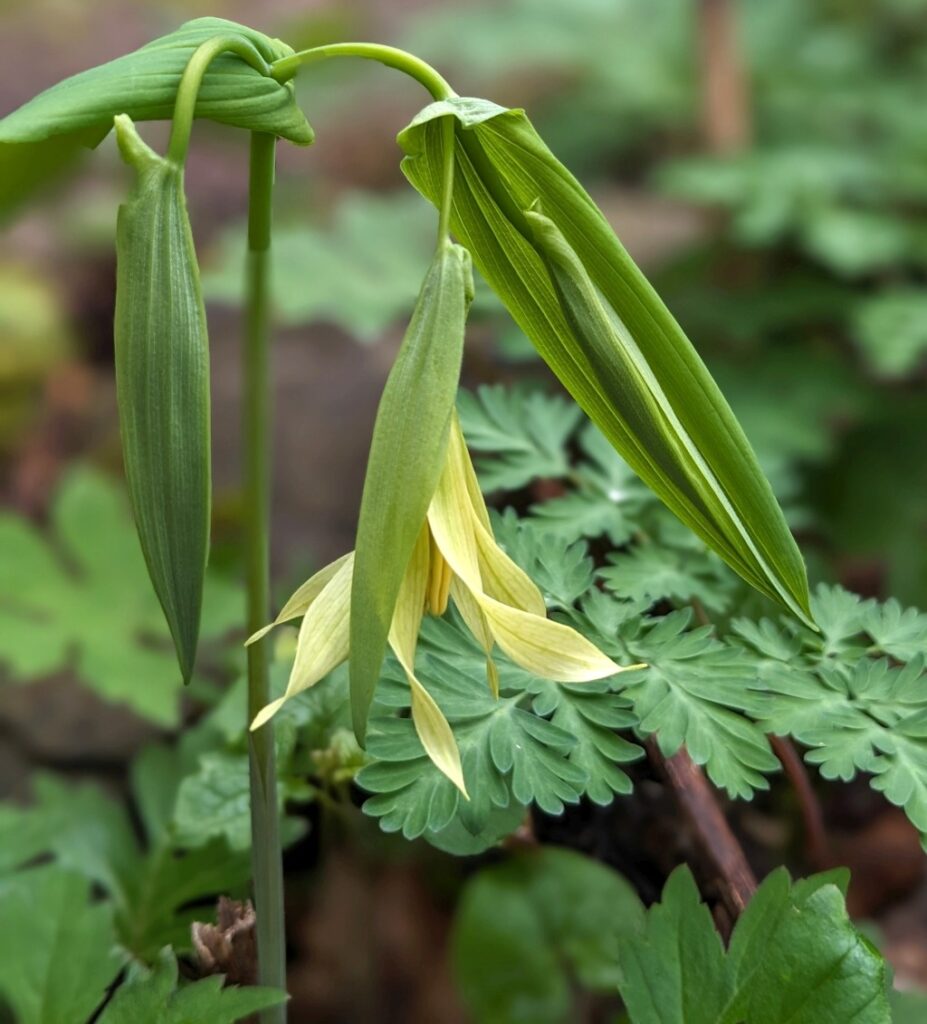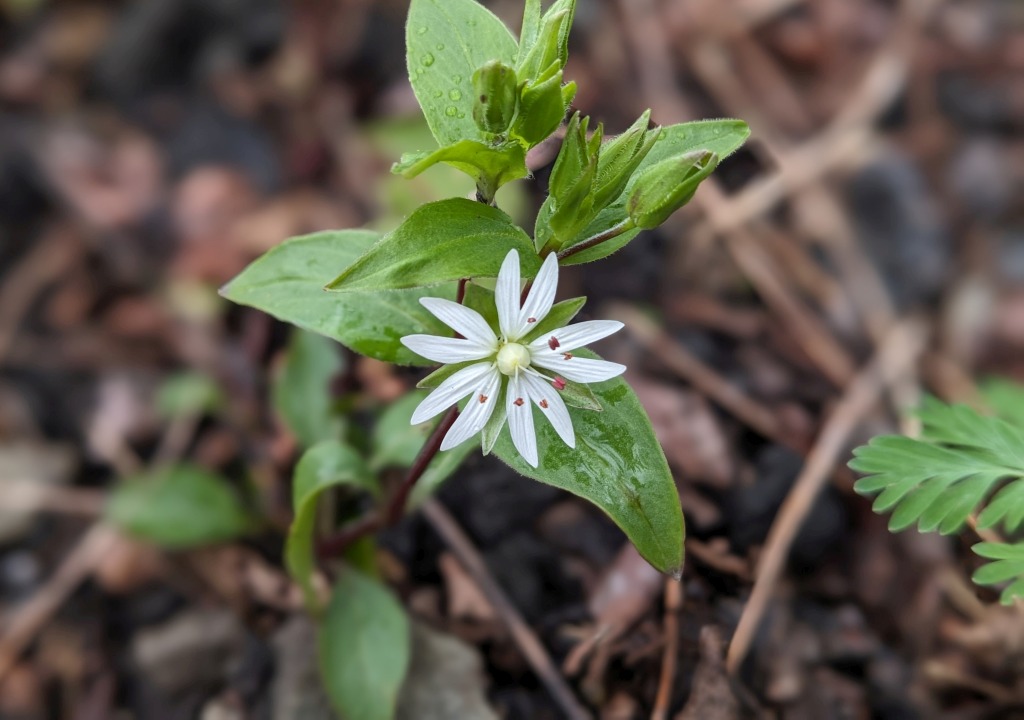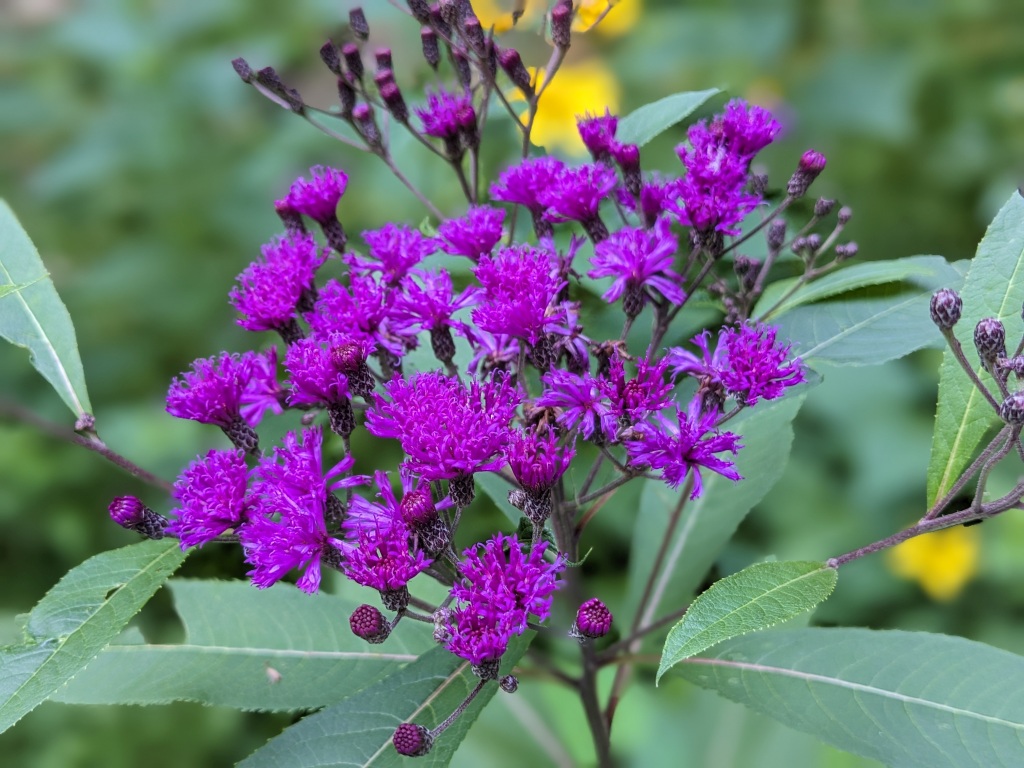
20 July 2024
Yesterday was my first opportunity to visit Schenley Park in more than a week.
- Deep purple flowers on New York ironweed (Veronia noveboracensis)
- Feverfew (Tanacetum parthenium) in bloom, a non-native plant from Eurasia.
- Eastern bottlebrush grass (Elymus hystrix) with tiny spider threads.
- Pavement glowing in the sun? No, pond scum on Panther Hollow Lake.
- Dead adult spotted lanternfly nose-down with legs flexed open. Shadyside, 18 July.
- Oh deer … Details near their photos.
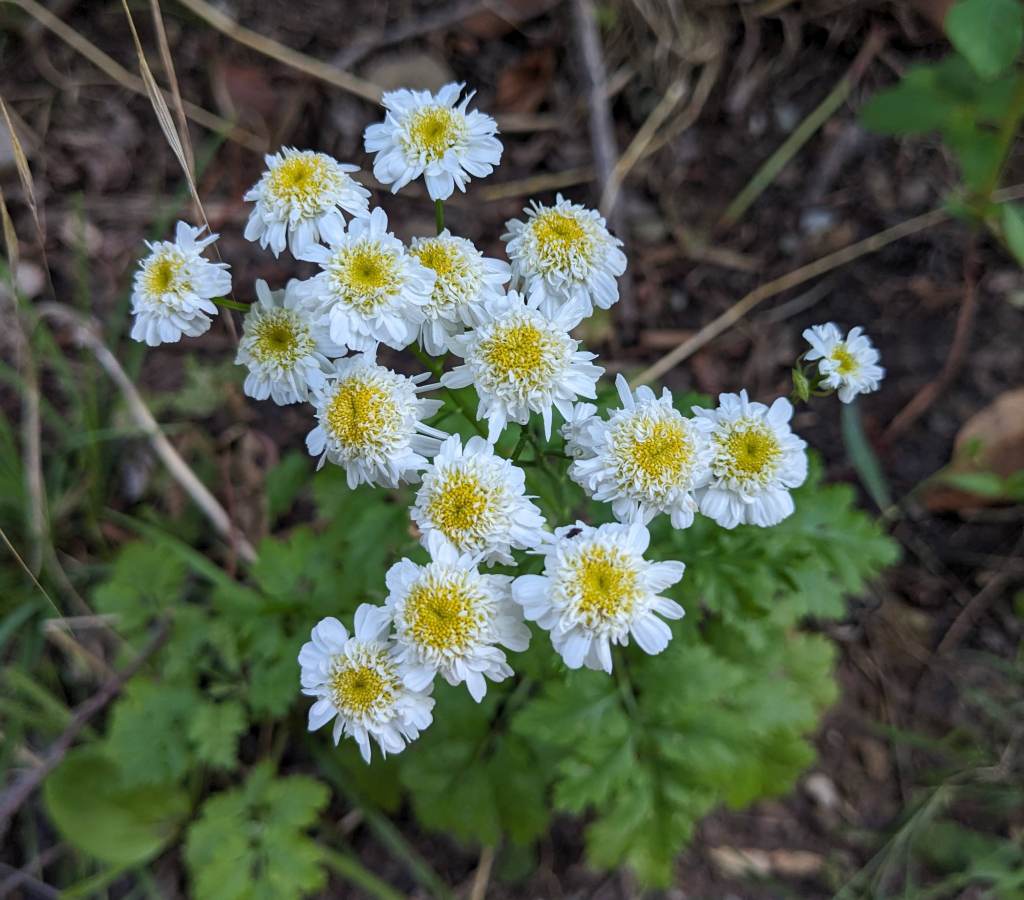
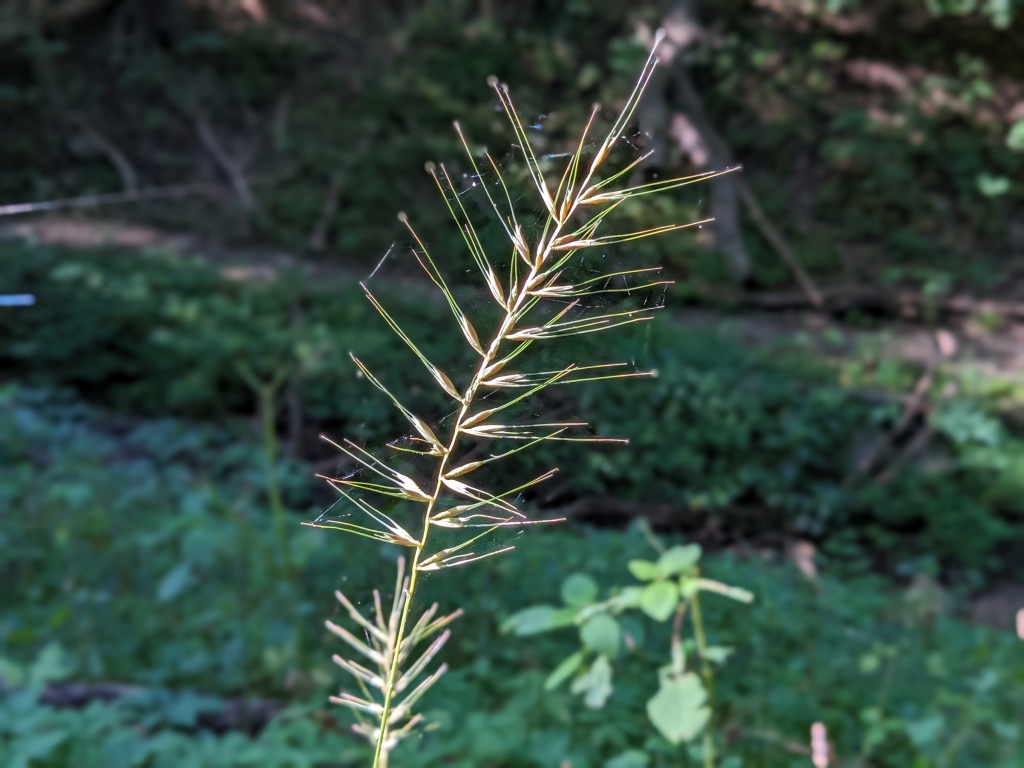
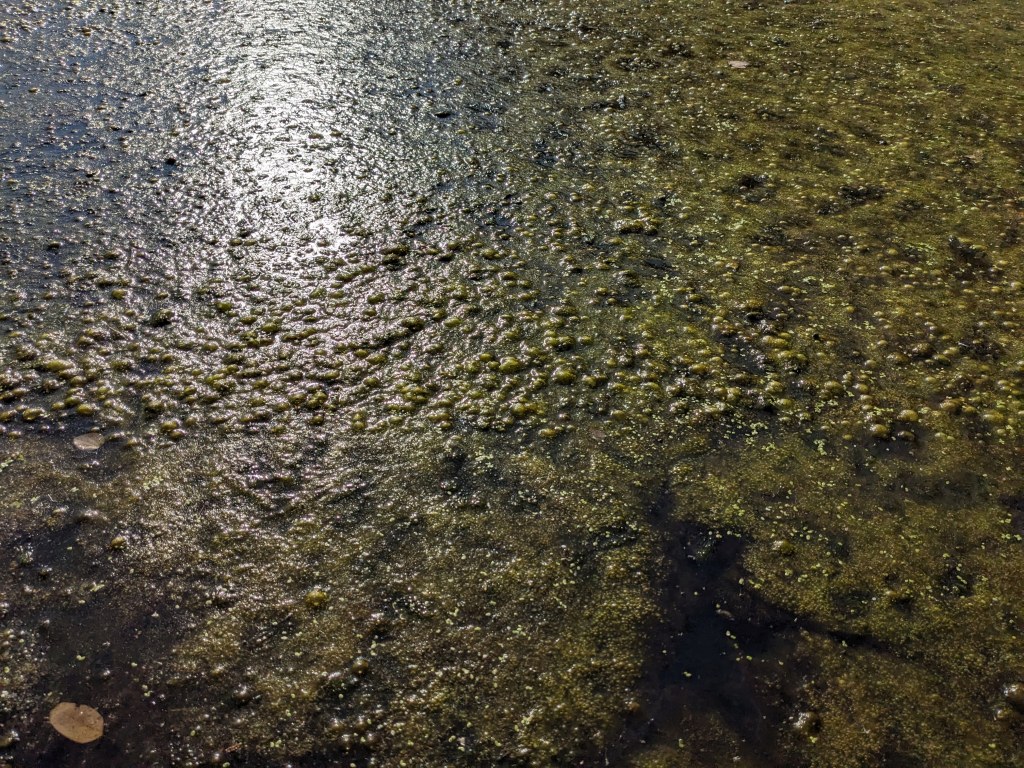
I took a brief walk in my neighborhood on Thursday 18 July and found a dead adult spotted lanternfly, my first this year but I was out of town. It is nose-down to the pavement because its legs are flexed open.
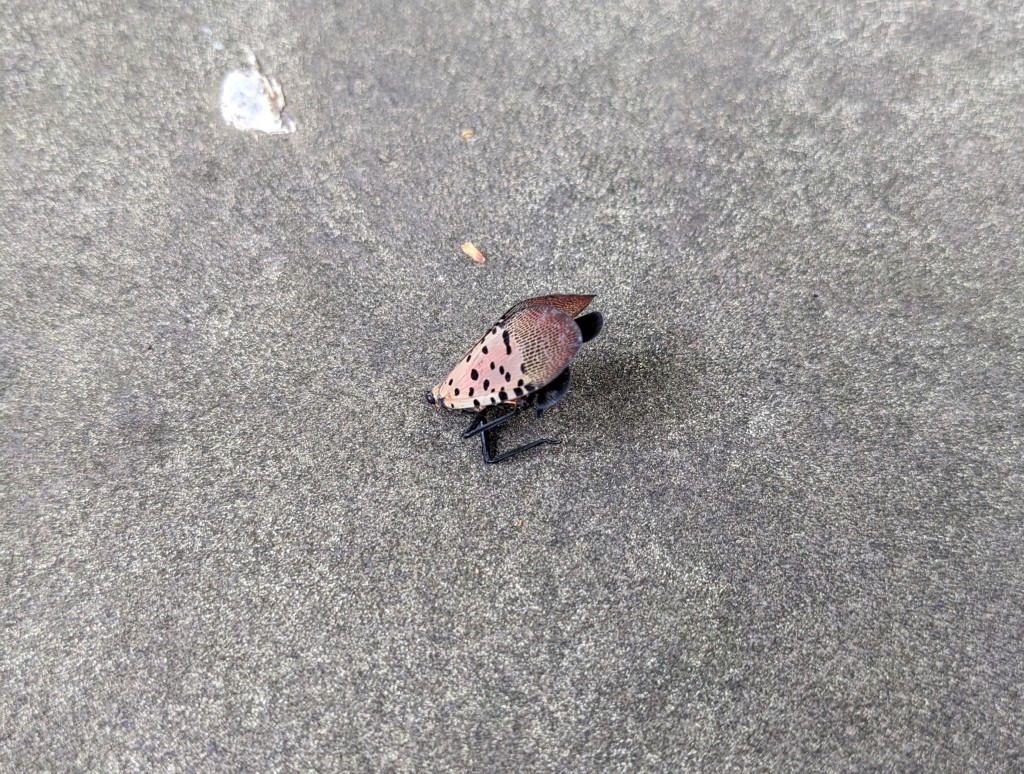
Oh deer. Yesterday I saw four deer in Schenley Park; three in this family. The two spotted fawns appear to be a month younger than this year’s cohort that were born in May. If so, it was because their mother bred later than the rest of the herd, perhaps because she was a fawn herself last year.
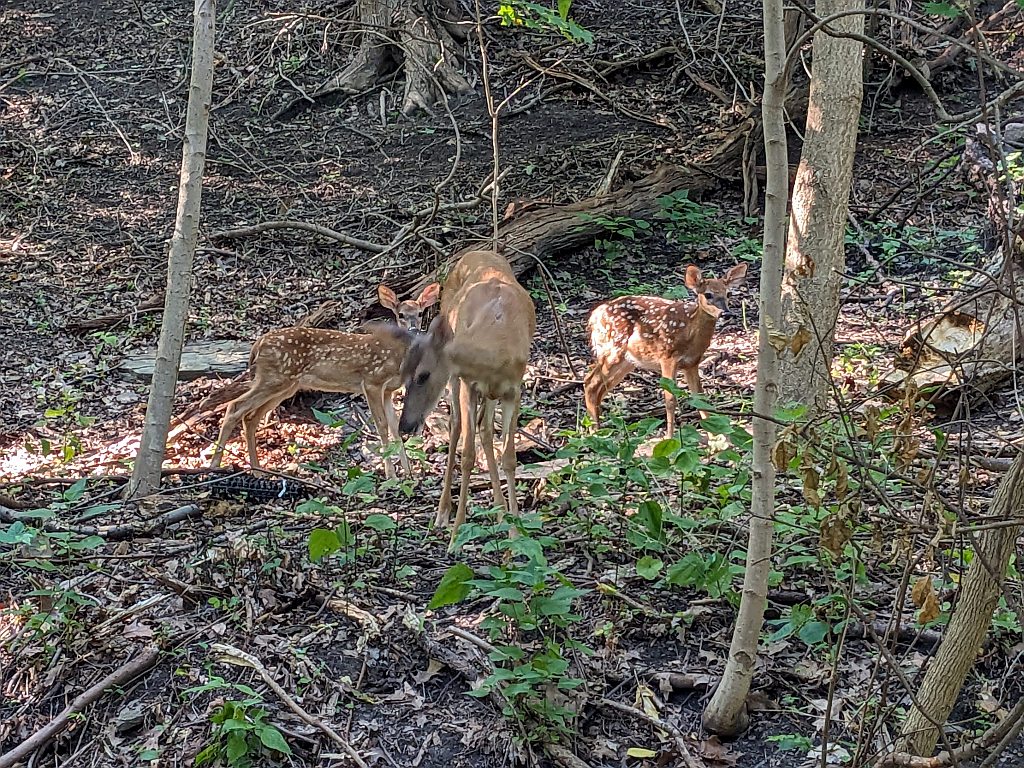
In the photo above, notice how little food there is on the ground. Without much to eat, deer in Schenley Park browse on foods they don’t like, such as the Japanese knotweed below.
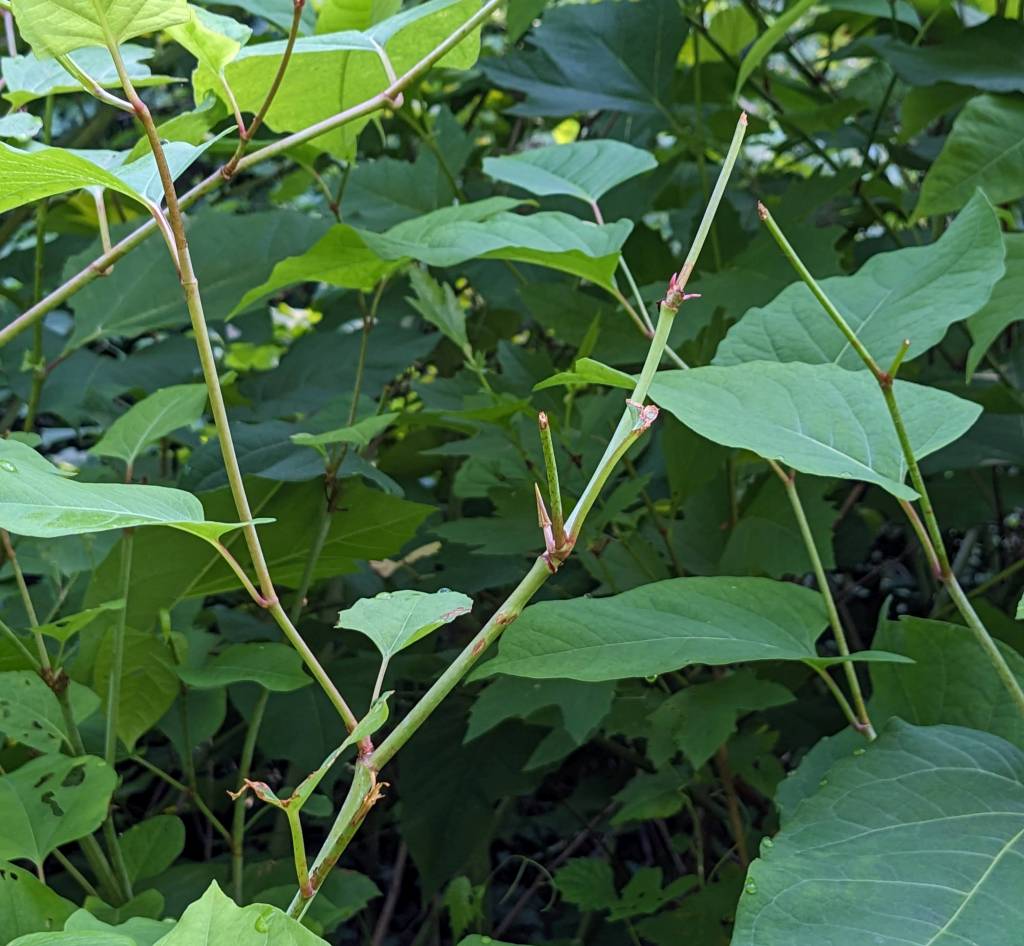
Neighborhood gardens have a lot more food, so guess where the deer go. Last month I saw two in a garden with plants up to their shoulders. Not for long, though. As I watched one of them opened its mouth to take a large bite.
